One of the great things about the Omlet Outdoor Cat Run is how extremely versatile it is. The run in itself can be modified to fit the space you’ve got and the need of your cats, but it doesn’t stop there! We constantly see creative and and fun ways of using the run, and we thought we might share some that could inspire you, whether you’re getting a run for the first time, or are just looking for ways to getting the run ready for spring!
DECORATIONS
When it comes to decorating the cat run there are practically no limits. Allow your cats to do all the things like like on the run, whether it is climbing, playing, running, scratching, hiding, or just lounging in a hammock. You can make the run even more practical with run covers that allow you cat enjoy the run in all weathers, or a chair for you to sit on while you’re spending time with your furbabies. We also love all the (catfriendly) flowers and plants that customers add to the run to make it blend in to the garden even more!
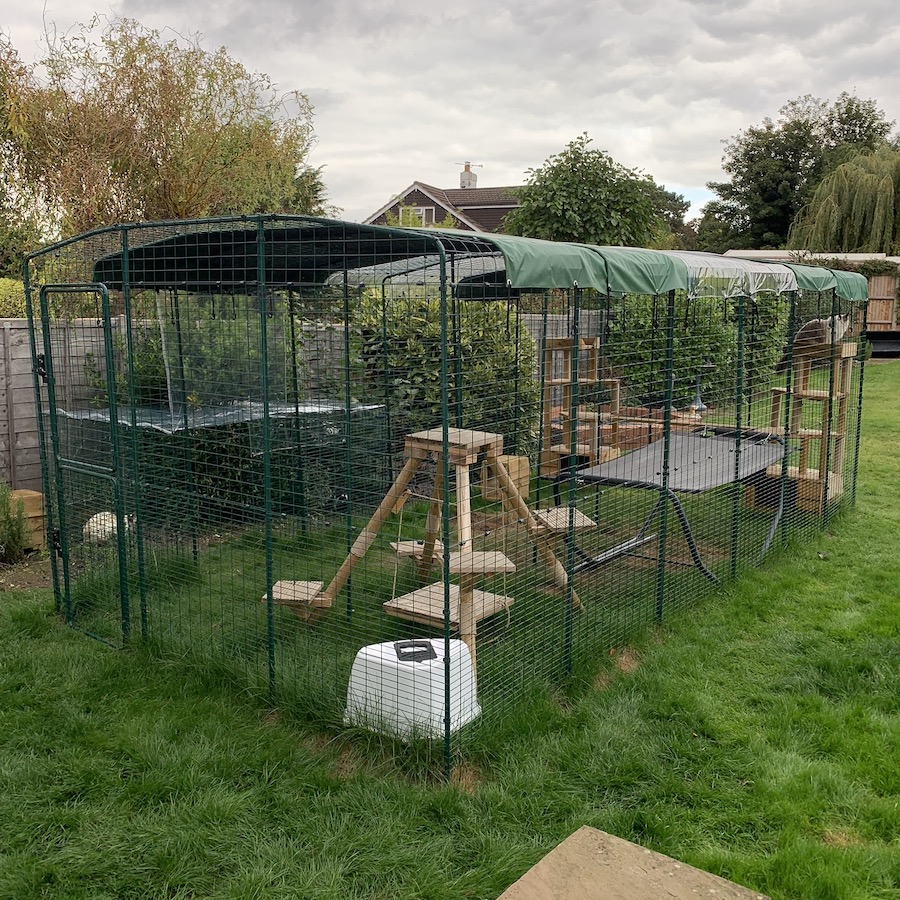
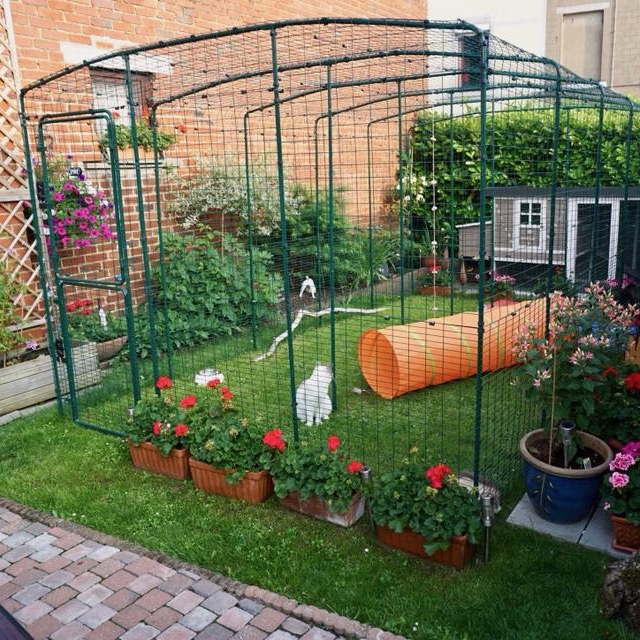
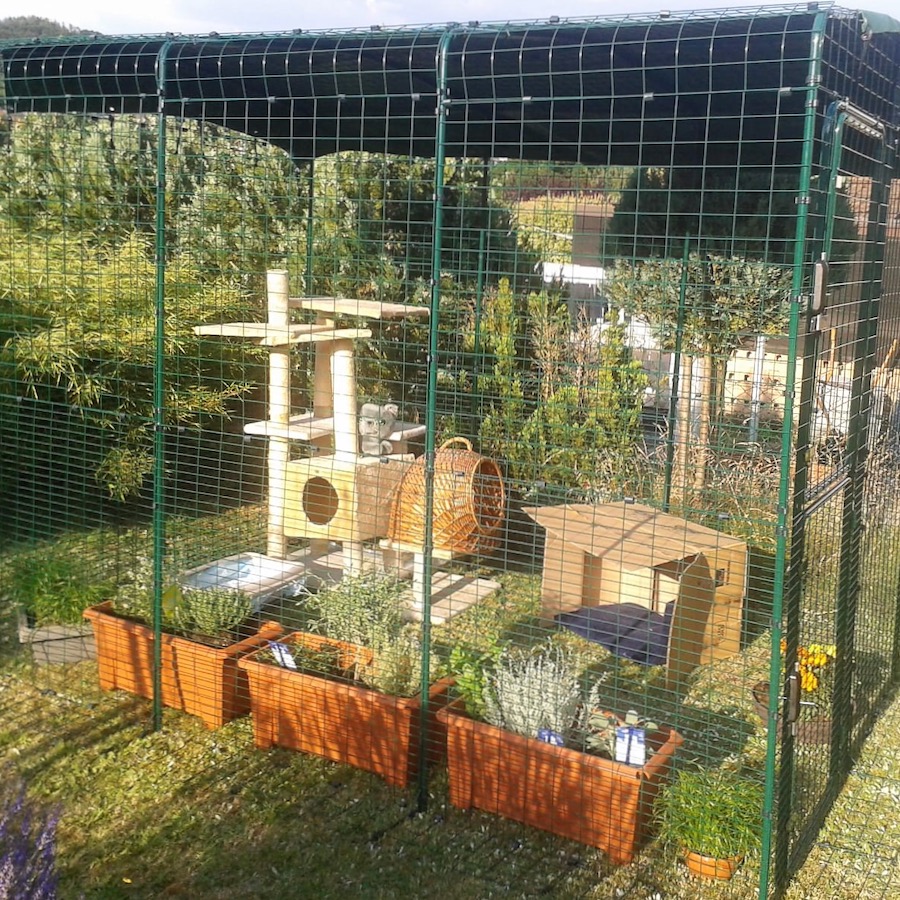
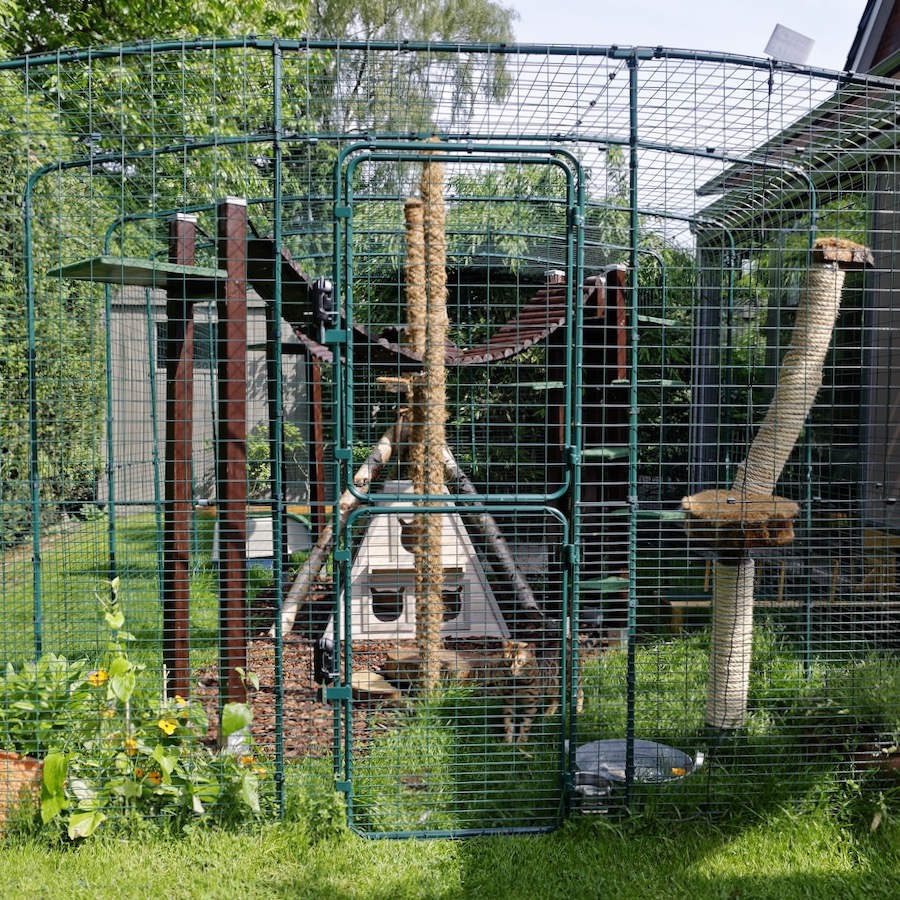
CONNECT IT TO THE HOUSE
The cat run comes with four walls, but is robust enough to be stable with only three of them. If you manage to find a way to secure the open end to the house, this is another way of allowing the cats to move between inside and outside at their own will. This amazing set up is from a customer in Denmark, with a special kitty entrance from the basement into the run in the garden, where by the looks of things both humans and felines will enjoy spending time. By combining clear and heavy duty covers they have also made sure the cats are safe from both rain and sun while out on the run.
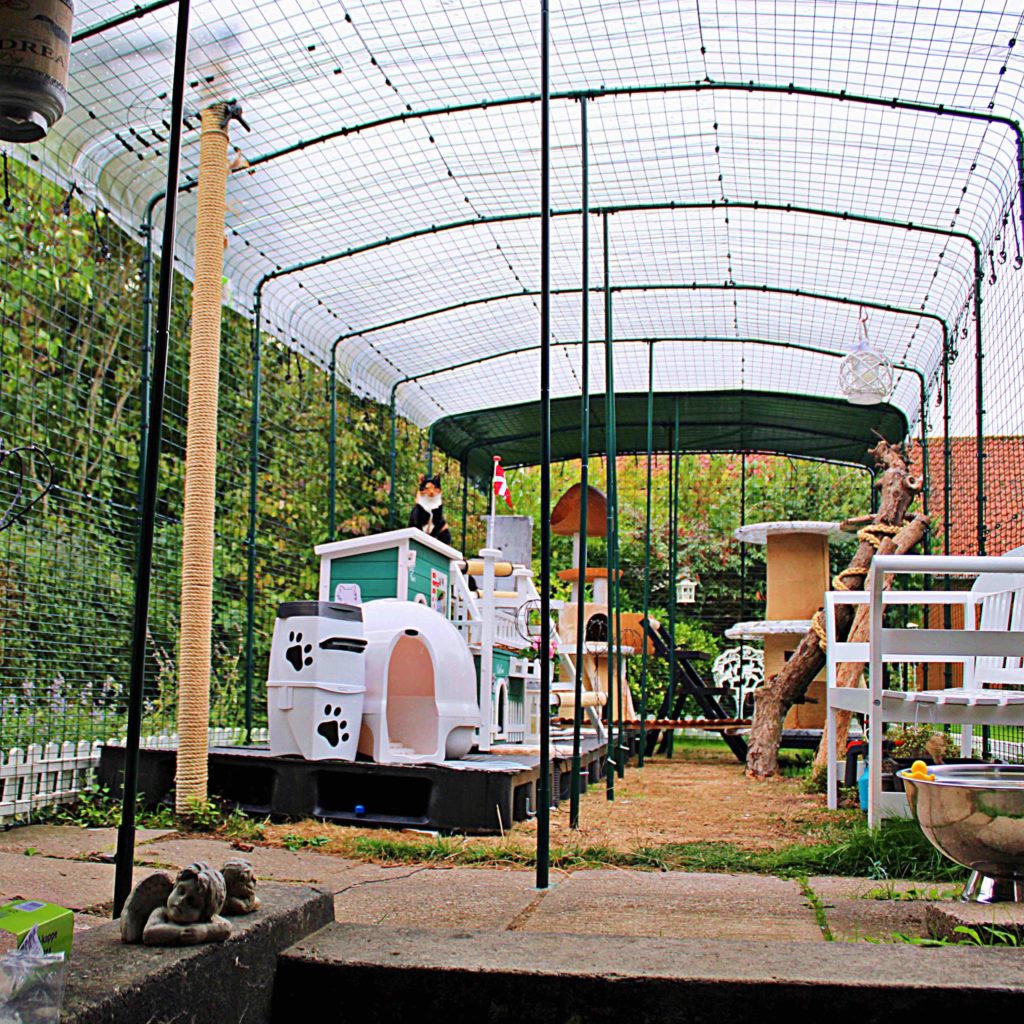
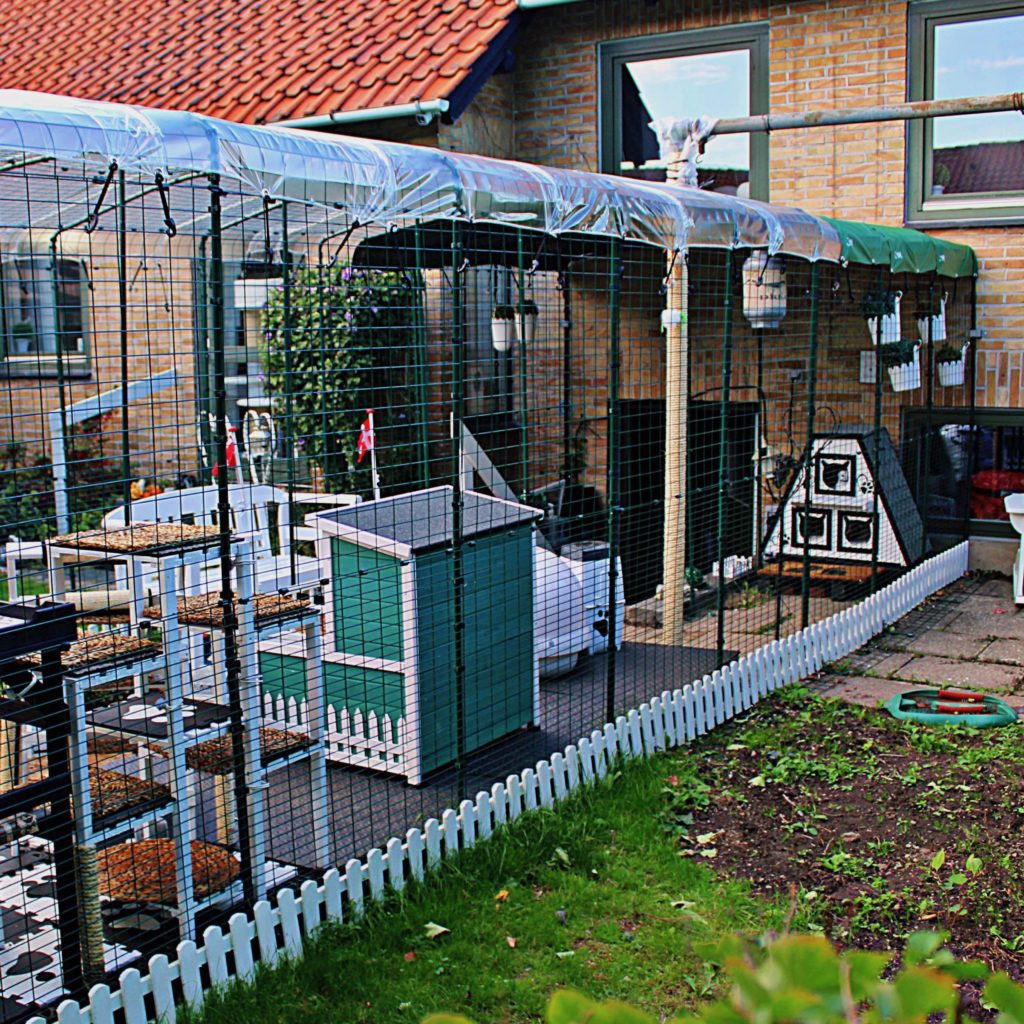
WORK WITH WHAT YOU’VE GOT
This German customer decided to build their run around a small tree in the garden. This way you get around most of the decorating of the run, as the tree will act as both a climbing post, and provide shade during sunny days. Ideal!
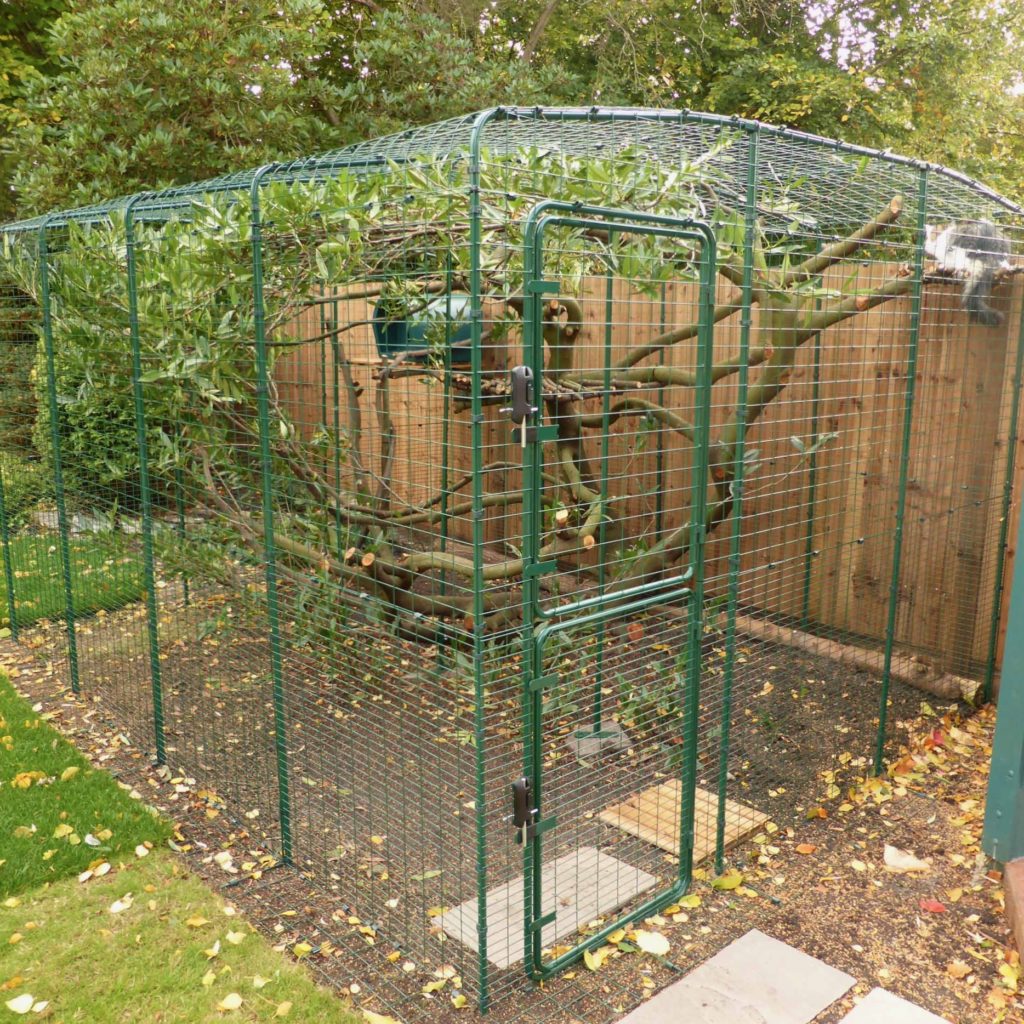
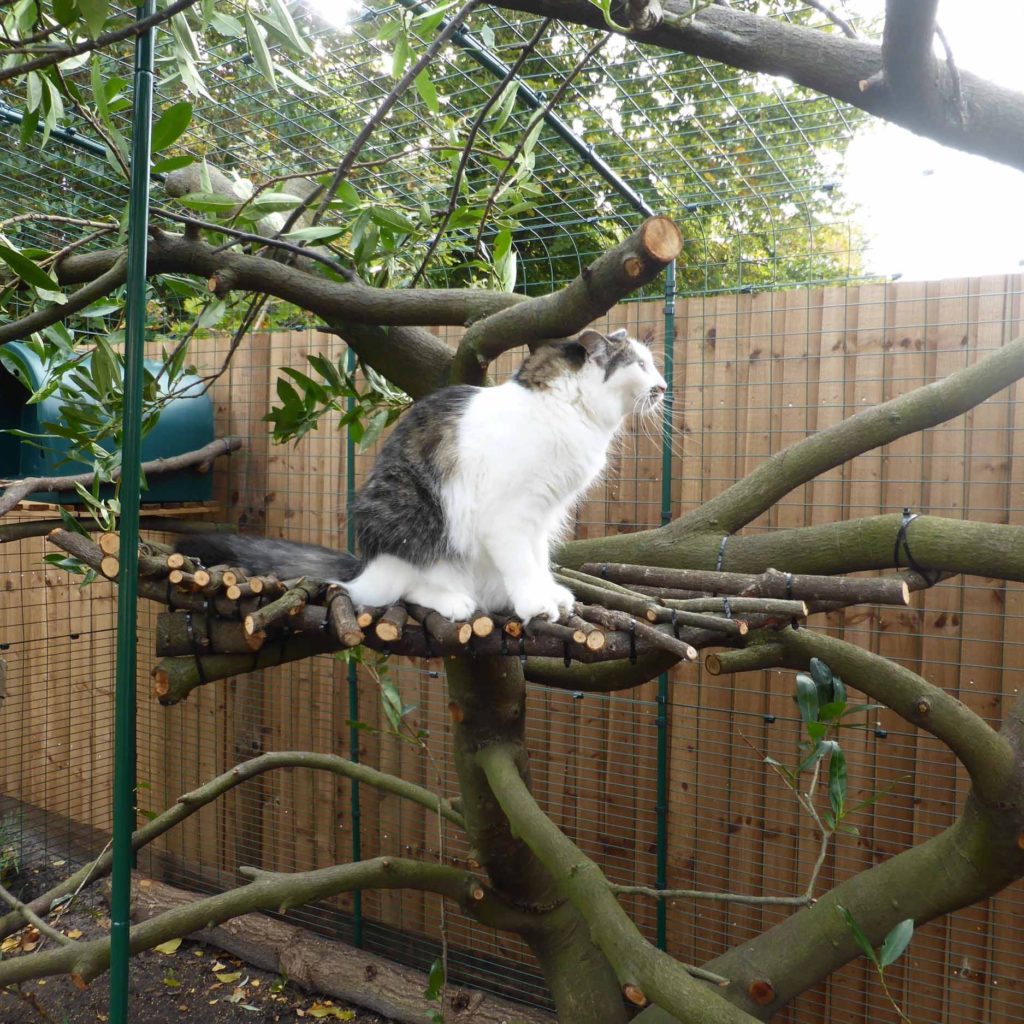
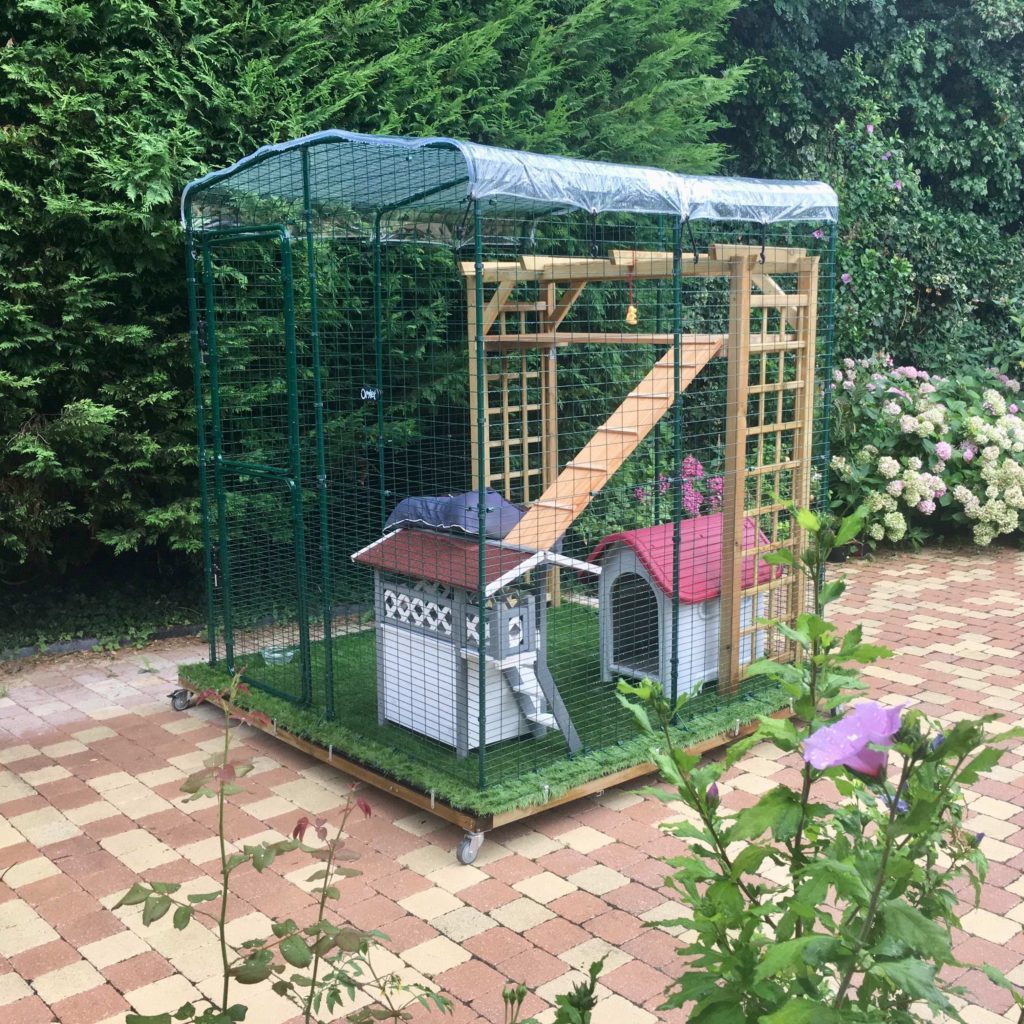
RUN ON WHEELS
The modular design of the cat run does mean that it’s possible to move it whenever needed. If you just want to shift it to a different spot in the garden you can invite some neighbours around and lift the whole run, and if you’re moving house or want to use the space for something else for a while, you can take it down and pack it up into pieces that are easy to store, ready for when it’s next needed.
However, this French customer didn’t think either of these solutions were good enough, and decided to build a platform with wheels, so that the run can be pushed around on the patio to find the perfect sun/shade ratio, or have the cat either relaxing in a corner away from the hustle and bustle, or close to the house for a more sociable time in the fresh air.
Again, a DIY specialist will be able to help you find what you need for this. Our advice would be to make sure you fasten the run on the platform, and that you choose wheels which can be locked to stop the run from rolling into the neighbours’ garden in strong winds!
CORNER SOLUTIONS
If you run out of space in one direction – turn a corner! This amazing feline haven might just be the best thing we’ve ever seen! The different resting places, the play tunnels, the toys, the decorative pebbled outline – who wouldn’t want to spend their days here?

Have you got a cat run? Send us photos of your set up, and you can feature in future posts!
This entry was posted in Cats
Cats love trees, they love things that hang and dangle, and they love shiny objects. With this said it’s not difficult to understand how your beautifully decorated Christmas Tree will seem like a wonderful playground to your furry friend. But a toppled tree will not only make a lot of mess, but it can also hurt your cat, so it’s best to do everything you can to keep your curious cat away from your holiday evergreen. Here are our best tips:
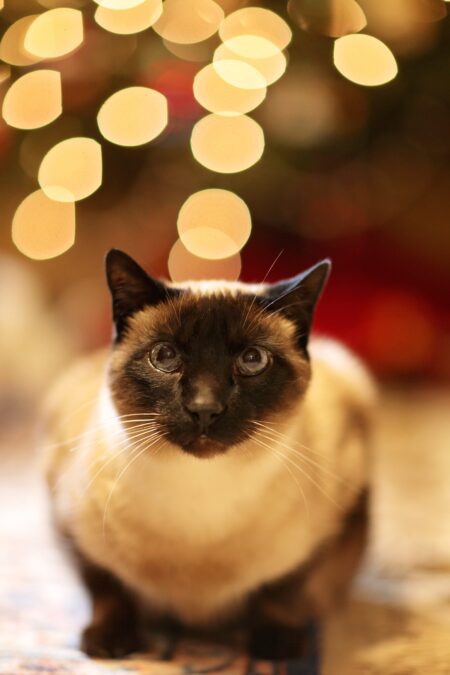
Choose the right tree and the right position
If you’re having a real tree, choose one with sharp needles, like a Scotch Pine, that the cat will want to keep their paws far away from. Hoover up the fallen pine needles every day, as they can cause serious pain if they get stuck between paw pads.
Place the tree somewhere away from bookcases, sofas and other furniture that the cats might use as a platform to pounce from.
Secure the tree
To make sure the tree doesn’t topple over and fall if the cats were to get hold of it, make sure you choose a stand with a wide base that can take some potential swinging. Depending on your set up, you might also be able to tie a piece of strong fishing line to the top of the tree and connect it to the ceiling.
Don’t tempt fate
When you’re at work, or in bed, close the door to the room with the tree to stop the cat from playing with it. Ideally you will be able to give the cat access to the rest of the house, but if you have to lock them in a room, make sure it’s big enough for them and that they have everything they need.
Go top heavy on the ornaments
Try not to place too many ornaments at the bottom of the tree where you cat can reach, especially not ones that are precious to you, or that would automatically break if they fell off. One idea is to get ornaments that make noises, like bells, and place them on the lower half of the tree. Not only will this potentially stop your cat from going further up the tree, but you will also hear when the cat has approached and can interfere before any damage is done.
You can also secure ornaments by using wire hangers, or plier ones that you can clamp around the branch. These will be more difficult for your cat to pull off.
Things cats don’t like
Cats hate the scent of oranges, so to discourage them from approaching the tree, you can put orange peels around the base. You can also wrap tin foil around the trunk of the tree. Cats don’t like the sensation of putting their paws on it or the crinkling noise it makes. This works better if you have a kitten or a younger cat, but it’s worth trying.
Secure the electrics
Some cats will nibble on the cables to the lights, which can hurt them or become potential fire hazards. Consider investing in pet-proof cord protectors, use duct tape to secure the cables to the floor or the wall, or use battery powered lights without long cables.
Skip the tinsel
Don’t use tinsel if you have a cat in the house. Tinsel is extremely attractive to cats, and they will pull it down and spread it all over the house. If ingested, it can also cause the cat serious injuries, so it’s best avoided.
This entry was posted in Cats

TURKEY
Let’s start with the most important thing – the turkey. The smell of the bird is going to be irresistible to pets, and they will try anything to get their paws on some meat. Never give your pet raw turkey, due to the high risk of salmonella from raw poultry. If you want to give your pet something, limit the treat to small amounts of cooked meat, but it’s best avoided completely.
The carcass will be almost as tempting, especially when it comes to dogs, but the bones could cause serious injuries to their digestive system. Never leave the carcass out on the kitchen counter or in a trash bag on the floor where your determined dog or cat can get to it. To minimise the risk of illness and injuries, it’s best to dispose of the carcass in a secure trash bag and take it out as soon as you’ve finished with it. Remember to add any wrapping or string that the bird came with or that you have used while cooking it. Don’t underestimate how nice that smell is to your pets, and how hard they will try to get to it!
OTHER HUMAN FOOD
Too much people food can cause stomach problems, and in bad cases inflammation of the pancreas. Our festive food is often too fatty, too salty and too sugary for pets (not to mention poisonous in some cases), and they are better off not having any of it.
If you want to spoil your pet for Thanksgiving, why not give them a new toy or a nutritious treat that has been especially designed for their species?
TRAVELS
If you’re crossing state lines or international borders, your pet will need an updated health certificate from your vet. Read up on the requirements for the states you will be visiting or passing through, and make sure your pet is good to go. Ideally this should be done a few weeks in advance so you have time to get an appointment with your vet.
While traveling, take regular breaks and make sure that you’re pet is safe and comfortable while you’re on the move. Depending on how long you’re going to be away for and what pet you have, it might be more convenient for both you and your pet to leave them behind and ask a neighbor or a friend to check in on them while you’re away.

UPDATED TAGS AND MICROCHIPS
Whether you’re travelling somewhere your pet hasn’t been before or you have guests going in and out of your home over the holidays, the risk of them getting lost or running away is much greater than normal. Make sure your pet is chipped and that the information is up to date.
SAFE SPACE
While some absolutely love it, a lot of pets can get nervous when lots of new, unfamiliar people visit. If your pet is on the nervous side you might want to make sure they have somewhere set aside for them where they can go if they’re feeling stressed or need a break from all the hustle and bustle.
A crate is a perfect place of safety for a dog, but a cat will also love a cosy den to curl up in. Give them their favourite toy and some water, and let them relax in their pet haven for a while.
RULES
If you have people coming over, make sure they are aware of the rules concerning the pets. Show them which doors and windows need to be shut, tell them when they should leave your pet alone and when it’s okay to approach, and let them know that they should not feed the pets leftovers.
Lots of plants and flowers that we use for decorations around Thanksgiving can be harmful to pets. Cats are often more at risk as they can reach most decorations, and are more likely to try to nibble a centrepiece, or that bouquet you put on the side table, but dogs and smaller animals like rabbits and hamsters can also suffer.
Try to choose flowers that are not poisonous, or that don’t cause gastrointestinal upset. When it comes to decorations such as pine cones, cornucopias, candles and flameless lights, be sure to keep them out of pets’ reach as much as possible. Never leave your pets unsupervised in a room with candles or an open fire.
This entry was posted in Cats
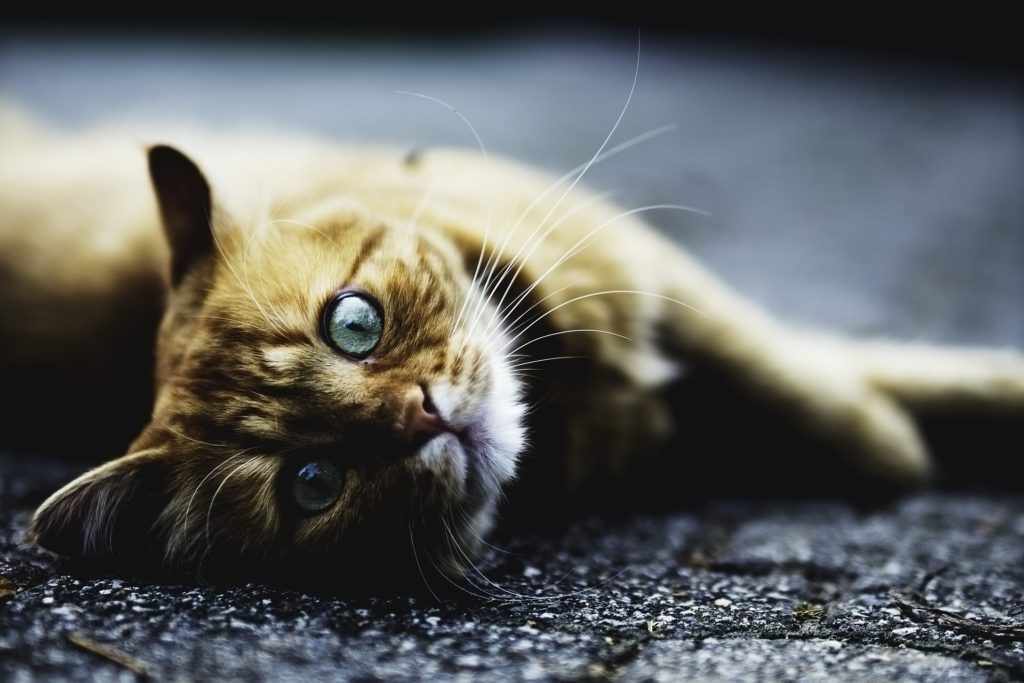 Contact neighbours to check sheds and garages
Contact neighbours to check sheds and garages
Before you go for a full search party, try contacting your neighbours and ask them to check their garages and sheds to see if your cat has accidentally got locked in. As you’re walking around the neighbourhood, call the cat’s name and listen out if you can hear a cry from any garages.
Make sure someone is home
If you don’t have a cat flap, make sure someone is at home while you’re out searching just in case your cat decides to come back. Some cats do just like to go for a walkabout for a few days. If the weather takes a turn and it starts to rain, it can be heartbreaking to think of your pet out in the cold weather, but actually bad weather can help as it will drive your cat home as it seeks shelter.
Go out searching
If you know your cat, you will know where their favourite hang out is. Make sure you head along to their most frequented spots and take a box of treats with you to loudly shake and call their name.
Put up posters
Make sure you put up posters locally, including lampposts, notice boards in shops and post through peoples doors to spread the word and make them more aware.
Make sure they are collared and chipped
If your cat is chipped, then if they’re taken to a vets the vet can call you and reunite you asap. If they are not, make sure you call all of the local vets and check your cat hasn’t been brought in.
Social media
Put up a post on your social media similar to your physical poster and ask friends and family to share it. Also message your local community Facebook groups to get them to post about the missing cat.
Let your other cat help
If you have another cat, it can be tempting to keep them locked in whilst the other one is missing due to your worry. Don’t do this! Make sure your other cat is allowed out exploring as they normally do, more often than not they will lead you to your other cat who might potentially be trapped or injured. Also if you follow your other cat it will give you an idea where they normally spend their days.
Use smart front door cameras
Front door cameras such as Nest and Ring will often pick up any movement going past their house including animals. Check with your neighbours if anyone has one and ask them to look at motion alerts from the time you last saw your cat.
If you move house
To avoid your cat getting lost when you move house, keep them indoors for at least 3 weeks to avoid them getting disoriented or trying to head back to their previous territory. This time indoors allows them to settle and regard the new house as ‘home’ marking their scent.
You can also rub butter on your cats paws on the first day you arrive, instead of stressing and trying to dart out the door your cat will enjoy sitting down and licking the butter off its paws thereby slowly becoming familiar with their surroundings.
Whilst they’re kept indoors, keep sprinkling some of their used cat litter around the garden so that it warns off other cats and also is a familiar scent for them when you do let them outdoors. Once you do let them out, do it just before a usual mealtime, if they’re hungry they will more likely come back to the sound of dinner rattling in the box or packet.
The need and want to return to their old home can be very strong for a cat, particularly if the house isn’t very far away. Make sure the new owners have your contact details in case your cat returns.
This entry was posted in Cats
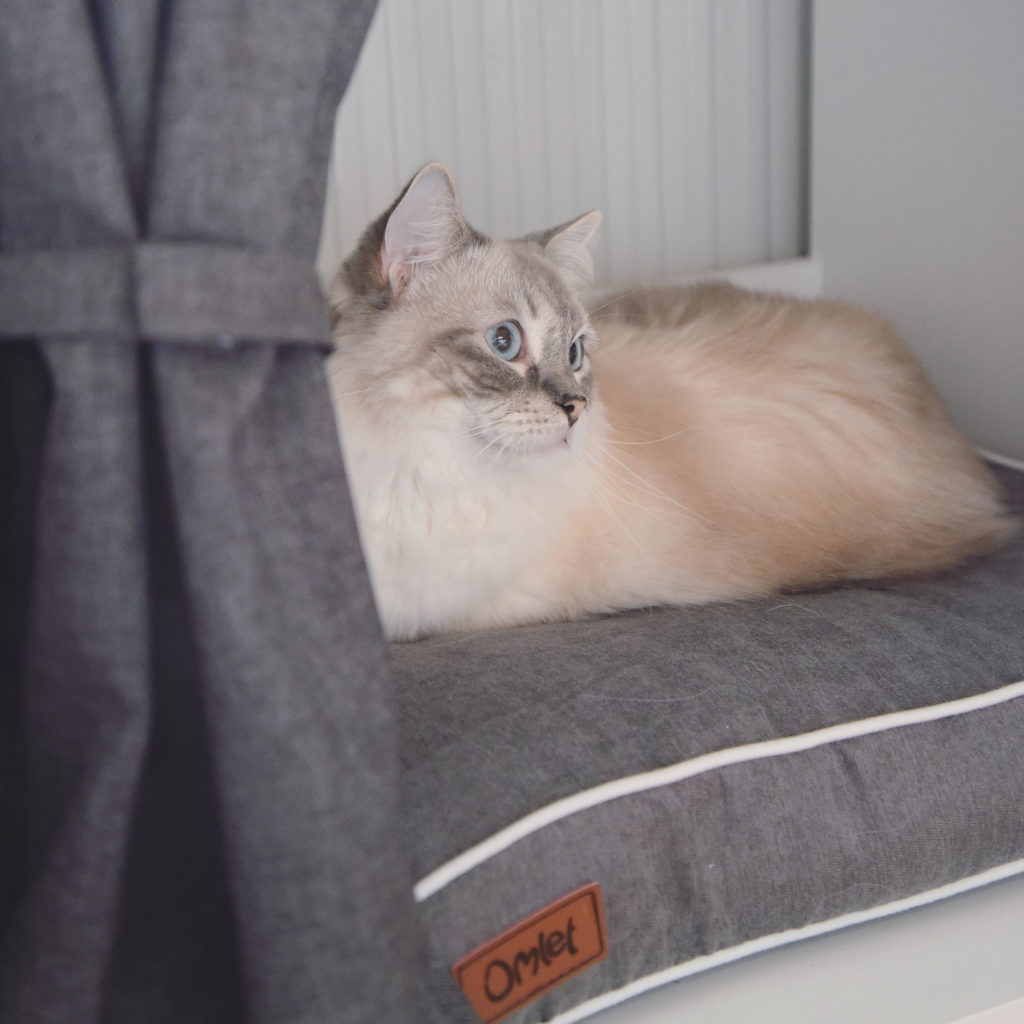 Some cats would rather have an early night on a warm sofa than a long night out on the tiles. The Persian, the Ragdoll and the Russian Blue, for example, all view the world beyond the window as a hazard rather than something irresistible on the other side of the cat flap.
Some cats would rather have an early night on a warm sofa than a long night out on the tiles. The Persian, the Ragdoll and the Russian Blue, for example, all view the world beyond the window as a hazard rather than something irresistible on the other side of the cat flap.
Breeds such as the hairless Sphynx and the thin-coated Cornish Rex and Devon Rex struggle at both ends of the weather scale, burning in strong sunlight and shivering in the cold.
Other breeds, such as Burmese, Korat and Siamese love being outside and will soon become stressed and destructive if forced to live behind closed doors.
Many others mix and match as the mood takes them. For example, you’ll never see an Abyssinian cat more content than when she’s curled up in a favourite armchair – until you’ve seen her rolling blissfully on the lawn.
But no matter where your feline friend sits on the Coach Potato/Great Outdoors scale, one thing they all love is warmth. For an outdoor cat in the UK this is no problem from – let’s be optimistic – the back end of March to the middle of October. But when the temperature drops and the frosty mornings bite, every cat needs somewhere to warm its paws.
An Indoor Haven
You don’t need to have the central heating blasting out to keep your cat from shivering. A cosy spot to curl up in, away from drafts, hustle and bustle, will do the trick. It could be something as simple as a box with a blanket, or a safe space under the cupboard – or even on top of it. Best of all, a tailor-made cat bed will maximise cosiness and heat retention.
Another custom-made option is the Maya Nook. This transforms your cat’s cosy corner into a piece of attractive furniture, providing snuggling space for your pets, and with curtains that keep it all nice and private. The Maya Nook also has an optional wardrobe attachment, for keeping cat food, toys and other feline bits and pieces tidied away.
Even without the heating cranked up, the enclosed nature of the Maya Nook makes it the perfect hot spot at any time of the year.
An Outdoor Haven
If you have the kind of cat who craves the outdoors no matter what the weather, and who sometimes likes to sleep rough in the garden, there are things you can do to make their life a little comfier.
A box-with-a-blanket in a shed or other outbuilding, or a covered area in a quiet corner, can all give the bare minimum of cosiness that no outdoor cat can resist. Even a little dry area under a trampoline or climbing frame can do the trick.
If you have an Omlet Cat Run, you can put a covered snoozing area in one of the corners. That keeps things snug and safe for a cat who likes being outside, but who has a tendency to disappear or wonder into danger.
If your cat still suffers the shivers in winter, you could buy a cat jacket. These can be particularly useful for hairless breeds such as the Sphynx.
Best of all, though, there is that perennial favourite warm spot that can help a cat through the longest of winters – your lap!
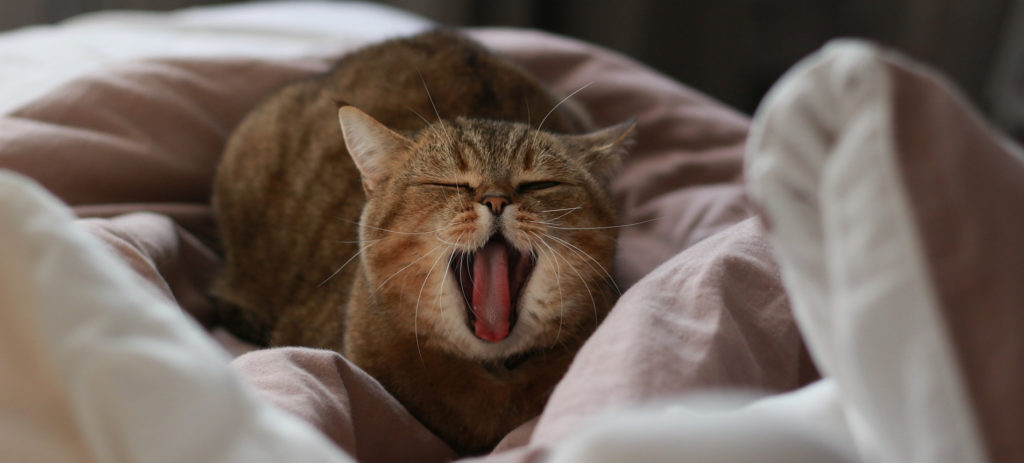
This entry was posted in Cats
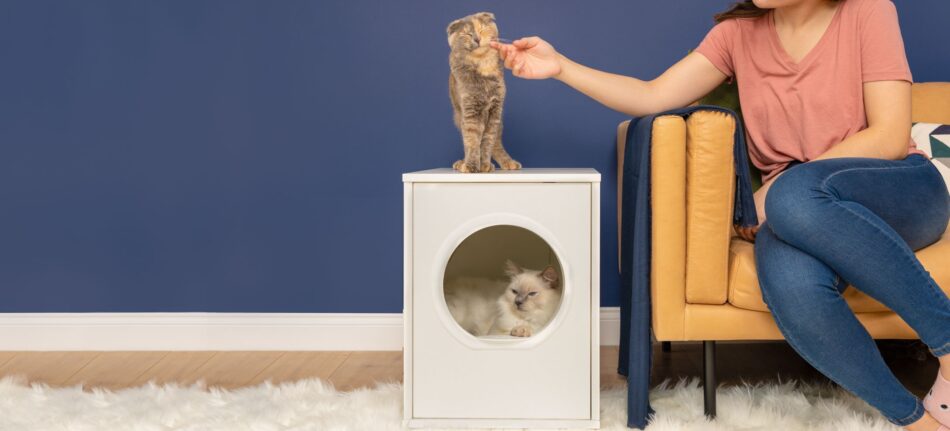
Cats have a reputation for being aloof but in reality, their behavior is often misinterpreted when compared to a dog’s. They might not greet you with a “welcome home” bark or wagging tail but cats actually form very strong bonds with their beloved owners, and the subtlety of their affection is all part of the feline charm. Discover more about what your four-legged friend is trying to communicate with these 15 signs that your cat loves you.
1. Your cat greets you when you open the door
The welcoming meow, the erect tale, the eager trot towards you… if that’s not a happy cat, we don’t know what is! Some cats even acquire an uncanny knack for predicting your arrival, sitting by the door or window and waiting for you before there’s any sight or sound of you in the street. But you’ll need to verify that psychic trick with one of the other humans in the house…
2. Your cat enjoys being stroked
While it’s true that some cats just love being stroked no matter who’s doing the stroking, many don’t like being manhandled at all. If your cat shies away from an over-friendly stranger or discourages them with a claw or two, but lets you stroke them, that’s definitely love.
3. They groom you
You probably groom your cat but have you ever thought about your cat grooming you? Cats can show their love for their owners by giving them their own version of a groom by licking. So, next time you’re being licked by your cat’s sandpaper-like tongue, take this as a sign of affection that means they see you as family.
4. Your cat gazes at you
If your cat looks into your eyes without turning away, they’re completely relaxed in your company. A long, slow blink is a good sign too. A cat will normally interpret staring as a sign of aggression and will look away (or run away) but if they’re relaxed enough to meet your gaze lovingly, take it as a great compliment.
5. They head-butt you
Cats rub against humans and furniture with little discrimination. But, a full-on head-butt rub is a sign of affection, and doesn’t just mean they only want some food!
6. They bring you presents
Okay, this isn’t your cat’s most endearing habit, but the ‘gift’ of rodents – dead, half-dead or very much alive – is a sign that they feel secure and at home, according to some experts. There’s also a school of thought that interprets it as affection – it’s something a mother cat would do for her kittens, teaching them how to handle prey. Curious about what else your cat is bringing home? Take a read of our Cats and wildlife in the backyard blog for more.
7. Your cat meows a lot
Cats are thought to have a special ‘meow’ for humans. If your cat mews, gurgles and vocalises a lot in your presence, they’re telling you how much they love you. If your cat has stopped meowing though, it could be a number of factors. Other than being a little stressed out, they could be experiencing allergies, recovering from recent surgery or a temporary loss of voice!
8. Your cat gives you the twitchy tail treatment
When your cat walks up to you, tail erect and twitching, they’re letting you know how pleased they are to see you. Sometimes it’s because they know it’s food time, but it’s also often simple affection.
9. They fall asleep on you
Cats are always wary and need to feel super-secure when choosing somewhere to snooze. If they choose you as their bed, take it as a sign of complete trust and contentment. But, as great as it is to be chosen as your cat’s sleeping spot, they do need an actual cat bed. Omlet’s Maya Donut cat bed is a great choice and with a pillowy-soft feel and designer feet for home hygiene, this luxury cat bed is perfect for felines and humans alike. Pair with a super cozy cat blanket for ultimate comfort that your furry friend won’t be able to resist.
10. Your cat sticks their bottom in your face
Cats have scent glands on their rear ends, a kind of scented ID. If your pet presents you with their behind, it means you’re a friend. Don’t feel you have to reciprocate, though…
11. They show their belly
A cat that rolls on their back and invites you to rub their tummy is very chilled and sees you as a friend and playmate. But that doesn’t mean they won’t use their claws in the belly-rubbing game that follows, so watch out!
12. Purrrrrrrrrs
Cats purr for a number of reasons and whilst this soft rumble doesn’t always mean they’re happy, most of the time it does. Other times you might notice your cat purring if they’re hungry, frightened, or injured.
13. Your cat gently nibbles you
The soft nibble of a friendly cat is very different from an aggressive bite. Some cats use this oral greeting as a means of bonding with their human friends. Some owners, however, discourage it, as even a gentle nibble can be a little uncomfortable if the cat gets over-enthusiastic.
14. They follow at your heels
If it’s not food time, this behavior is a sign of pure affection and your cat simply wants to be with you. Some cats tag along with their owners outdoors, and many are very happy to follow their best friends to bed. Once you’ve let them adopt this habit, it’s a hard one to break.
15. Your cat kneads you
This behavior is thought to originate in kittens, pawing their mums to stimulate milk flow. If your cat does it to you, take it as a sign of affection, bonding and trust.
Omlet and your cat’s love
At Omlet, we’re not mistaken that cats definitely love their people – even if they show it a little differently. That’s why we design cat products to support the various personalities cats celebrate their differences. From cozy cat beds, to snuggly cat blankets and sustainable cat scratchers, Omlet has a range of ingenious inventions that your love will love.
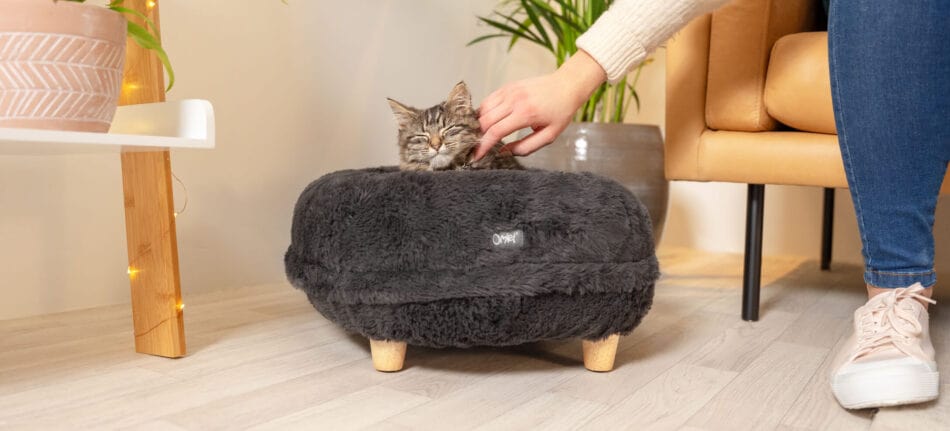
This entry was posted in Cats
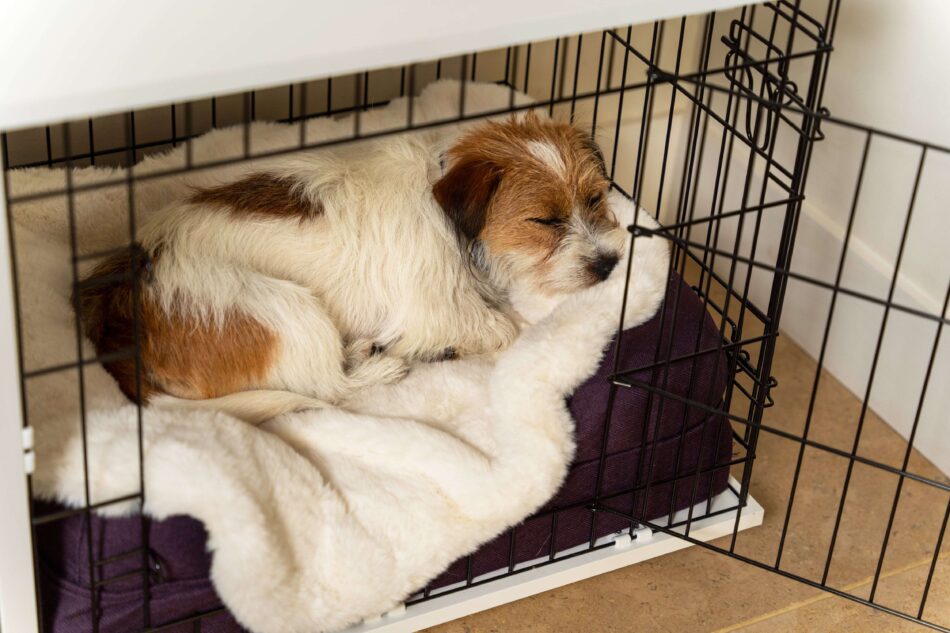
Have you ever found your dog or cat curled up in a tiny, enclosed corner around the house when the weather gets cold? Perhaps under the bed, behind the sofa, or even in an empty box? When the temperatures drop outside, most of our pets’ usual snoozing spots become very cold and exposure to chilly drafts become uncomfortable. But you can help combat the cold by giving your pet a comfortable and warm space for naps this winter. Read on to find out how you can create a snuggly den for your four-legged friend to call their own.
Find a cozy corner of your home
Do you know your pet’s favorite place to sneak a snooze? As winter rolls in, keep an eye on your dog or cat’s “go to” spot to curl up for naps. It will be the place where they feel most secure and can completely relax without keeping one eye open. Most likely it is in a warm room in your house where they will have some company, but not so much that they will be kept awake or interrupted frequently. This will be the ideal location to create the cozy den for your pet! And if you have young children in the house, you might want to consider a room that the little ones don’t have access to.
Find the perfect bed
Once you have your pet’s preferred location picked out, it’s time to cover it with cozy! Sleeping on your bed or the sofa might be your dog or cat’s usual spot for comfort, but unless they sneak under the covers, they will still be exposed to those pesky drafts! And never mind the fact your bed will be victim to muddy paw prints, too! Placing your pets’ bed within something else to create a ‘den’ is a much better solution.
The Fido Nook Dog House and Maya Nook Cat House designed by Omlet offer your pet just that! Thoughtfully designed like a stylish piece of furniture, the Nook offers a sanctuary of security where your pet isn’t just pampered, but protected as well. Place your pet’s bed inside where it can be slightly raised off the ground, limiting the cool drafts and maximizing their comfort. The Nook is also available with curtains that can be attached to the front and back for added coziness and that secluded sleep retreat feeling! And to help ease anxiety for pets affected by loud noises that may come with the holiday seasons, this covered cozy den will be the perfect place for them to feel safe!
To complete your pet’s new den, you need to carefully pick out the perfect comfy bed to complement their coziness! For dogs, choose the Topology Dog Bed to place in their cozy corner and watch their naps elevate to the next level! This memory foam mattress comes with a variety of customizable topper options and the best part, they are all machine washable! And for the cats who need a comfy corner to claim, add the Maya Donut Cat Bed to the Nook or any cozy spot to create the ultimate den. The luxurious cushioning of this premium faux fur cat bed will leave your cat feeling divinely delighted with every cat nap!
Add the finishing touches
A cozy pet den isn’t complete without layers of warmth. For the dog or cat that likes to burrow in blankets or nest in a nap, adding soft, cuddly blankets to their den will make all the difference! The Luxury Faux Fur Sheepskin Blanket designed by Omlet is just what every pet needs to make a pet den feel like a home within a home! Let your pet discover an extra layer of comfort with this carefully and beautifully designed pet throw! It will quickly become your pet’s favorite blanket to bring with them wherever they go and you will love the ease of cleaning the dirt and smells as it is completely machine washable.
Most dogs and cats are social animals and love to be in your company. But just like us humans, when the weather gets cold outside, they like a personal retreat to call their own so they can feel comfy and warm. So create that cozy den for your pet so they can enjoy the magic of the season just as much as you!
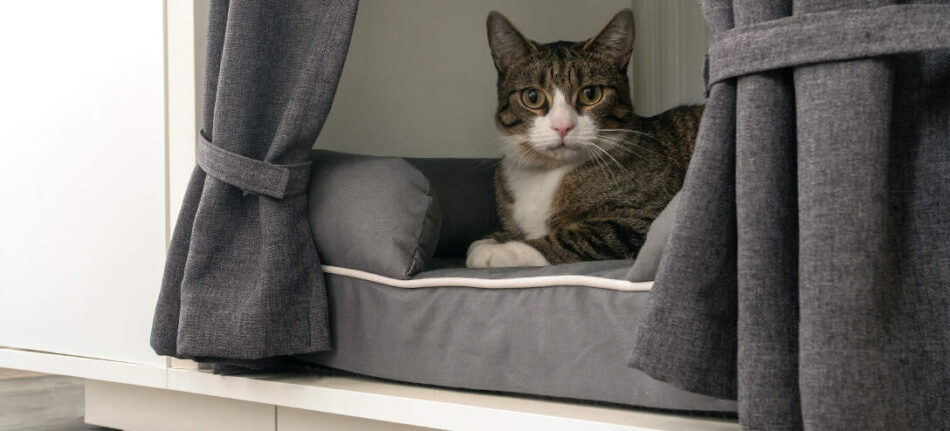
This entry was posted in Cats
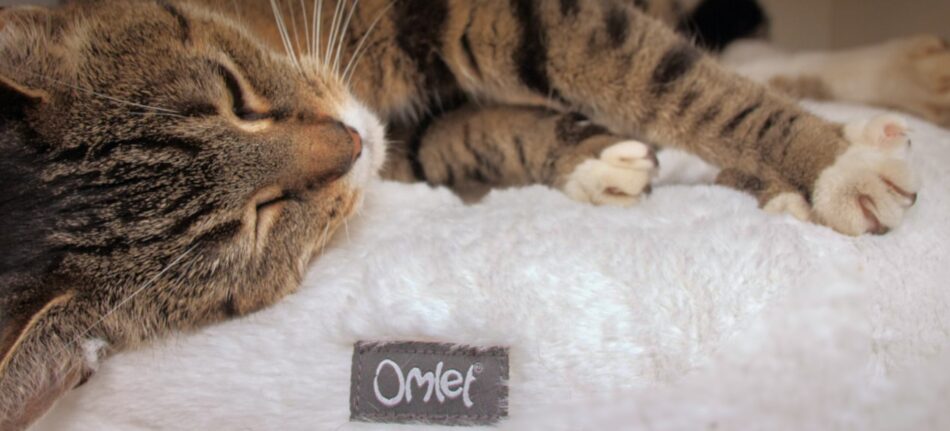
When your cat has access to the outdoors they’ll usually manage to get plenty of exercise by themselves. If you decide to keep them indoors though, you’ll likely need to encourage your cat to exercise. Ensuring your cat is getting enough exercise, in combination with a complete and balanced diet, is vital for their health and happiness. A cat won’t exercise as readily as a dog, but there are a few strategies that will help you keep your cat active and mobile.
The great outdoors
Our product designers wondered how they could create an outdoor exercise space for indoor cats that didn’t compromise on safety or adventure. The result? The Omlet Catio. The perfect way to get your cat moving, Omlet’s Catio provides your cat with all the benefits of the great outdoors, without compromising on safety. The customizable design means that this outdoor cat enclosure works perfectly for all sizes of backyard and cat, and is purpose-built for the addition of a Freestyle Cat Tree – the ultimate cat gym every indoor cat needs, bound to get your cat off the couch and jumping, scratching and climbing all year round.
Is a scratcher the solution?
Cat scratching posts are an essential part of maintaining feline fitness. Omlet’s Switch Cat Scratching Post not only supports a cat’s natural desire to claw with its biodegradable sisal sleeve but what really makes this the coolest scratcher to ever exist are the 1,200 irresistible light modes. Yes, that’s right – we’ve really created a light-up cat scratcher.
With inbuilt, customizable lights, the Switch is a brain-training, full-body workout. We know that getting a cat to use a scratching post isn’t always easy but we also know that cats are fascinated by fast-moving, bright lights. The Switch engages their natural hunting instinct, with irresistible LED prey to stalk, chase and pounce on all day.
It’s also the sustainable choice. Choosing the Switch can save up to 49 KG of CO2 emissions over a cat’s lifespan, compared with a like-for-like scratcher. The bamboo base lasts indefinitely – you only need to replace the 100% biodegradable sisal sleeves every 6 months. The Switch is the scratcher with serious staying power.
Cat wheels – fad or fitness phenomenon?
Exercise wheels are a relatively new cat product which provides both mental and physical stimulation. The wheels are entirely cat-driven, so by using it, your cat will train their muscles and burn calories. It often requires training for your cat to build up confidence and learn how to use the indoor cat wheel. High-energy breeds like Bengals and Sphynx tend to learn the easiest.
Is it ever okay to play with your food?
In their natural environment, cats have to hunt for their food and eat about twelve times a day, whereas cat owners will simply put food into a bowl and walk away. You can add some excitement and activity to feeding time by using a food ball. This is a ball the size of a tennis ball, in which you can put dried cat food. As the cat pushes and bats the ball the food will gradually fall out.
Time for play
An indoor cat will need plenty of stimulation and play to prevent them from becoming bored. Cats play to mimic their natural hunting behavior, although not all cats have the same levels of motivation. Find out what cat toys your feline friend likes and dislikes by trying toys with different textures, shapes, sizes, noises and scents. Most cats enjoy interacting with their owner and playtime is a great way to develop the bond between you and your pet.
Some cats go wild for laser toys. The intensity and length of the sessions should depend on the cat’s age and physical condition. Be sure to never shine laser pointers directly into your cat’s eyes and at the end of the playtime, gradually slow down the beam until it comes to rest on a soft toy the cat can catch to avoid frustration.
Crazy for catnip
Nepeta Cataria is a plant that is commonly known as catnip or catmint. The response seems to be a kind of euphoria, similar to how humans respond to hallucinogenic drugs, although catnip is neither harmful nor addictive for felines. You can either buy catnip toys, make classic cat toys more interesting by filling them with catnip, or use a catnip spray. Usually, the effects of catnip last anywhere from 10 minutes to an hour, depending on the cat. Find out more about the remarkable effects catnip has in our previous Why do cats love catnip? blog.
Omlet and your cat’s exercise
We design innovative products like the Omlet Catio, Freestyle Cat Tree and Switch Cat Scratcher to support your cat’s innate natural behavior. At Omlet, we are always asking how we can use design and tech to meet your cats’ natural needs, both physical and mental. Because the happier they are, the happier we are.
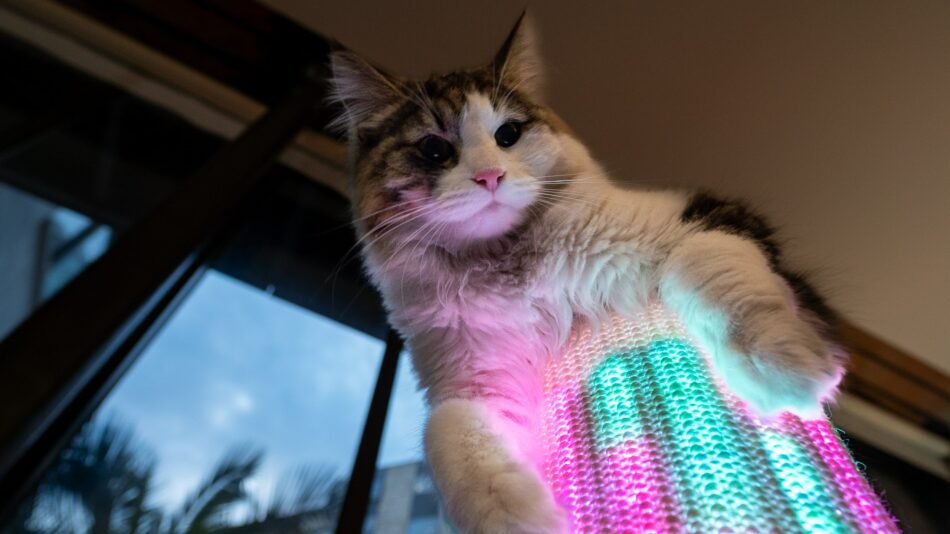
This entry was posted in Cats
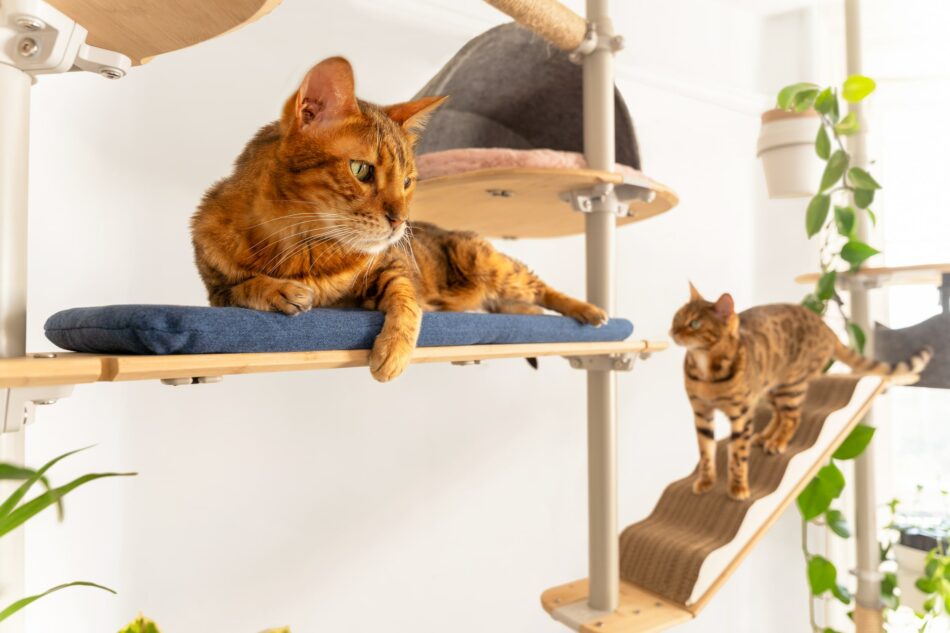
Have you ever wondered how your cat communicates with other cats? Do they speak in meows like they do with humans or do they have a special ‘cat only’ language?
Cat communication has evolved a lot over time. In the wild, the cat meow is a much lower, lingering sound than what we are used to. Fascinatingly, the beloved higher-frequency meows we hear are what cats learned through domestication to be more appealing and get what they want. As a result, domesticated cat’s meows are reserved mainly for us humans. When it comes to communicating with other felines, cats have several different ways they choose to ‘talk’. Let’s explore the many ways your cat communicates with other cats…
Talking cat-to-cat
Cats use the vocalization of meows or purrs to tell other cats (or you) what they want. With different pitches and intonations, they’re able to ‘speak’ their different physical or emotional needs. Here are a few examples of the types of sounds cats make and what they mean:
- Trilling-chirruping sounds – Cats will make this cat-specific sound when watching or stalking potential prey.
- Pleading, drawn-out “mee-owww” – This delightful sound is mostly reserved for us humans – it’s their way of saying “pay attention to me and give me a snuggle!”.
- Low growl: When a cat wants to be left alone, they will communicate with this low-level warning to tell another cat “back off” or “leave me alone”.
- Wailing hiss: You’ll know your cat is in distress or about to launch an attack when you hear the anxiety-ridden hiss sound.
A tale of cat tails
While using their voice is the way we most associate a cat’s ability to communicate, for everyday communication, cats actually prefer to use their body. More specifically, their tail. A cat’s tail acts as a flag waved on a stick. You can tell how they’re feeling and what they’re communicating when you better understand what each tail position means.
Let’s talk cat tails! If you see your cat’s tail upright in the air, this is usually a sign they’re feeling chilled out and friendly. And if they start gently swinging the upright tail back and forth, you can rest assured that your feline friend is super relaxed. They may even roll over on their snuggly cat bed for a belly rub and a snuggle.
On the other hand, if you notice your cat’s tail lashing back and forth in a quick motion this most likely means they are stalking something with intent. And if they start swishing their tail furiously this is your clue to check their surroundings as it can indicate the early stages of anger. Best to make sure you have a secluded sanctuary, like the Maya Cat House designed by Omlet for your cat to escape anytime they feel too much anxiety.
The eyes have it
It’s often said that in a cat’s eyes, all things belong to them. But did you know cats can actually communicate their mood with their eyes? Here are some common cat eyes to keep your eye on so you can better understand what they are saying:
- A hard stare: If you catch your cat in a stare off this usually means they’re locked in on a danger or prey. Their focused, unblinking eyes are a sign of dominance and usually a warning sign to other cats, or even cat toys, to be aware.
- A slow blink: Just like a wink is a sign of affection from your loved one, a slow blink from a cat means the same. It’s as if they are giving you kitty kisses with their eyes!
- Eyes wide open: Wide, alert cat eyes may seem to indicate something is wrong, but in actuality, this is a sign of trust. Often the big eyes are followed by a head butt to really drive home the trust factor, but all the same, it means your cat is in good company.
- Lazy squint: There’s really nothing better than a lazy eye cat squint. You know, the half-blink, half-asleep look you get when your kitty is getting cozy on their cat blanket. Next time you eye your cat giving you this look rest assured they are content, calm and happy.
Smelly messages
When it comes to cats, the nose knows. Scents are vitally important to cats and another way they communicate. In fact, cats use their scent glands to leave pheromone signals across their territory, both in the home and outside.
By using the scent glands on their cheeks, cats will rub your leg, the couch or even a fellow feline to literally spread their love. This is a form of affection, you could argue, but its main aim is to spread the pheromone messages. Cats also have scent glands where the tail joins the body, however, this is a less appealing region to be rubbed by!
Tom cats, or male domesticated cats, will often spray urine on things to ‘mark their territory’. Thankfully, this is typically an outdoor experience, however, it could become an inside issue if a strange cat has ventured into the building. Neutering usually brings an end to this macho, territorial habit.
Omlet can speak cat
Much of this communication behavior stems from the fact that cats are not pack animals. And so communicating with others is not a regular occurrence. At Omlet, we speak cat and we know all too well how much they need their personal space, only inviting others into it – feline or human – when they’re in the mood.
That’s why it’s important that you have a secluded spot for your cat to retreat to whenever they want so they can feel their best at all times. The Freestyle Indoor cat tree designed by Omlet is a perfect cat sanctuary as it allows your cat the ability to escape up high away from humans or other pets when they need that coveted alone time. Learn to recognize the feline’s vocal and body language, and you’ll soon be able to ‘speak cat’ yourself!
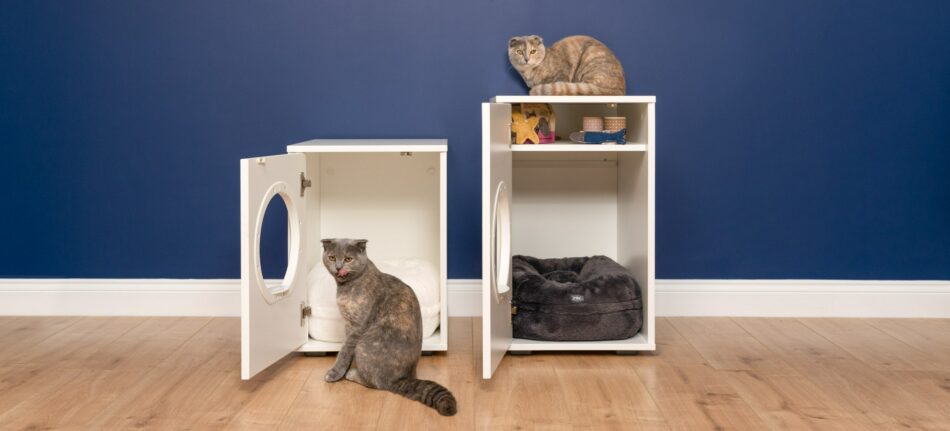
This entry was posted in Cats
Fill your Instagram feed with these purrfect kitties and get double tapping!
Dewy’s big, beautiful eyes will have you smitten kitten!
https://www.instagram.com/p/B1J97qnJsTm/
Ever felt infurior to a beautiful cat? Look away now…
https://www.instagram.com/p/B00qlxMpW59/
Nathan is cat mom goals!
https://www.instagram.com/p/Bz-8WcIFL18/
Be prepared to get incredibly jealous of this classy cat’s moustache…
https://www.instagram.com/p/Bwij_wfH8U_/
Get lost in these Russian Blues’ green eyes…
https://www.instagram.com/p/B1jiKHaC63x/
So soft! So fluffy!
https://www.instagram.com/p/B1TbgEYDExm/
Zappa is cooler than all of us. No arguments.
https://www.instagram.com/p/BuE6oWjhEkD/
We are envious of these guys’ cattitude.
https://www.instagram.com/p/B19BYv6Jux2/
Can we be best friends with Mr Pickles, please?
https://www.instagram.com/p/Bxs4DJvoejC/
Last but not least, the incredible Maine Coon Queens!
https://www.instagram.com/p/B1rT0QsogXu/
This entry was posted in Cats
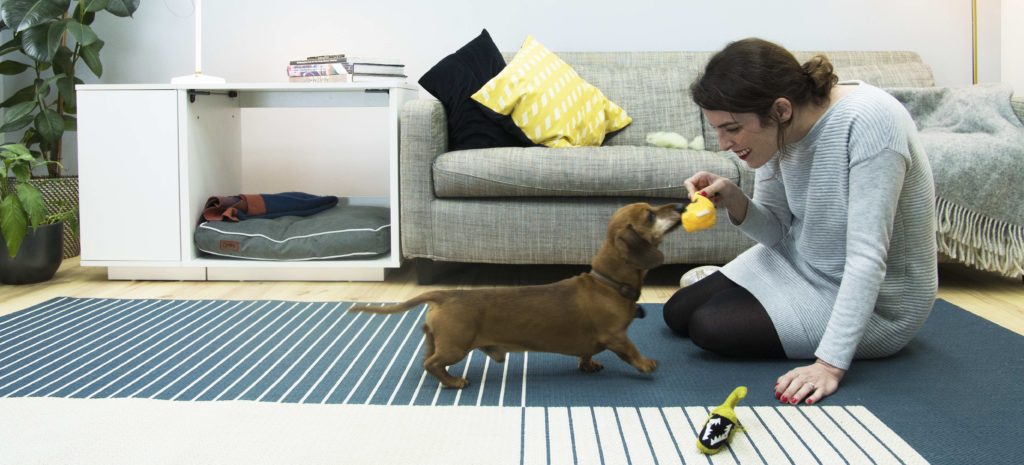
The arrival of a baby in a household turns things upside down. That’s certainly how it can seem to your pets. A dog may find there’s less time for walks and playing, and a cat may suddenly be ousted from her favorite sleeping places in the bedroom or on your lap, due to the presence of the baby.
It’s important to get your pets used to the idea of having the newcomer around, along with the changes in routine that go with it. And ideally the preparation needs to start before the baby is born.
Prenatal Pet Training
In the months leading up to the birth, spend slightly less time with your cat or dog – particularly if they are used to lazing in your lap or sitting by your feet demanding attention.
If your dog is not fully trained at this point, fill in the gaps with some training sessions. Get an expert in to help out, if necessary. Your dog needs to know the basic ‘Sit’, ‘Stay’ and ‘Leave it’ commands, at the very least. It’s essential that the humans in the house reinforce their roles as Alphas in the pack.
A new baby will bring new sounds and smells to the house. You can get your pets ready for this by inviting mums and dads with babies or toddlers to call in for coffee. Play a recording of a crying baby to acclimatize pets’ ears, and switch on any noisy new toys, mobiles, swings or other baby-related apparatus. Let your pets sniff a nappy and a cloth with a few drops of baby oil on it. Familiarity is half the battle.
Get Your Pet Vet-Ready
A neutered pet is a calmer pet, and less likely to bite. This is especially true with males. When neutered, they are less likely to view the baby as a rival. Arrange for a vet to perform the operation, if the pet is not yet neutered. And while you’re there, make sure Puss and Fido are up to date with their vaccinations, worm-free, and generally in tip top health.
Reset Schedules
Babies bring lots of unpredictability to a household, and old routines soon break down. There’s nothing wrong with this, but a pet who’s set in his ways may not take kindly to sudden change. Break him in by varying feeding times, blocking off no-go areas with a baby gate, or perhaps hiring a dog walker.
If the human mum-to-be has always been the pet’s chief companion, it’s handy if you can introduce another ‘favourite’ into its life. This could be a partner, older child or friend – anyone able to spend quality time with the animal.
Introducing the Baby
Before letting a dog or cat see the baby, let them sniff a blanket and a soiled nappy. Try not to show any nervousness when bringing the baby into the house for the first time, as pets will pick up on the bad vibes.
To make the first introduction, sit with the baby in your arms – ideally in a ‘neutral’ room, one where the pet doesn’t usually go – and let the dog or cat approach in its own good time (and one at a time, if you have multiple pets). Don’t force the issue. Have some treats ready to reward good behavior.
You can reinforce the positive associations by treating a dog whenever it’s around you and the baby. That way your pet will come to associate the baby with good things (i.e. food!) A cat will need less fuss in this respect, and will simply equate the baby with you, logging it as something not to worry about.
Whenever there’s any interaction between baby/toddler and pet, make sure there’s an adult around to keep an eye on the situation.
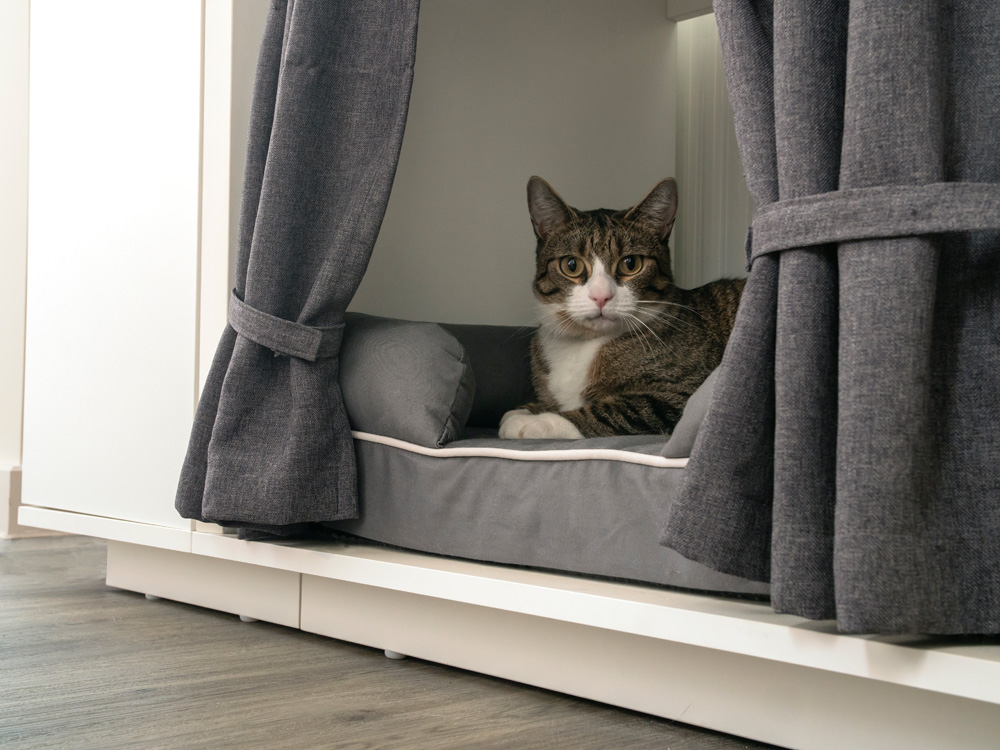 Special Notes For Cats
Special Notes For Cats
A docile cat needs to get used to the new baby, and to keep away when it’s asleep. A more flighty cat should simply be kept away. Toddlers seem to have an instinct for grabbing handfuls of pet fur, and a nervous cat may react by scratching. A cat flap with a lock can be handy in the early days, to keep puss outdoors at key times.
Many cats dislike a baby’s crying, and will disappear when the screaming begins. This is very handy! Make sure there’s a quiet, safe spot for them, away from the mayhem. The Maya Nook is a perfect solution to give your cat some privacy.
Cats feel exposed and nervous when they eat, so you should keep a toddler away from the place where your pet is feeding. It should also go without saying that you should prevent young ‘uns from rummaging in the litter tray too!
Special Notes For Dogs
All dogs will need to be well-trained, in a situation where trust is so fundamental. Some dog breeds are very rarely going to be friendly with children, though. A dog bred over hundreds of years for aggression is NOT a dog you should have in the family home. ‘Snappy’ breeds such as Jack Russel, Dachshund or Chihuahua can be problematic too, but you probably know your dog best.
A treat-based puzzle toy such as a Kong ball is a useful distraction. You can give it to your dog while you spend time tending to the baby, to divert the pet’s attention.
It’s important not to abandon dog walks, as that will lead to doggy stress and frustration. It’s a case of ‘business as usual’, where ‘usual’ has simply undergone a few changes.
The dog/child relationship is a two-way process, and youngsters need training too. Teach them to be gentle with the dog, and they will have the basis for a good relationship.
And the importance of that relationship shouldn’t be underestimated. Children learn lots about friendship, respect and responsibility from interacting with animals. There is also evidence that allergies are less of an issue in kids who have been brought up with pets.
So – you’ve replaced your ‘pet baby’ with the real thing. That means big change. But when handled properly it’s a positive change, the beginning of a new chapter in the happy family home.
This entry was posted in Cats
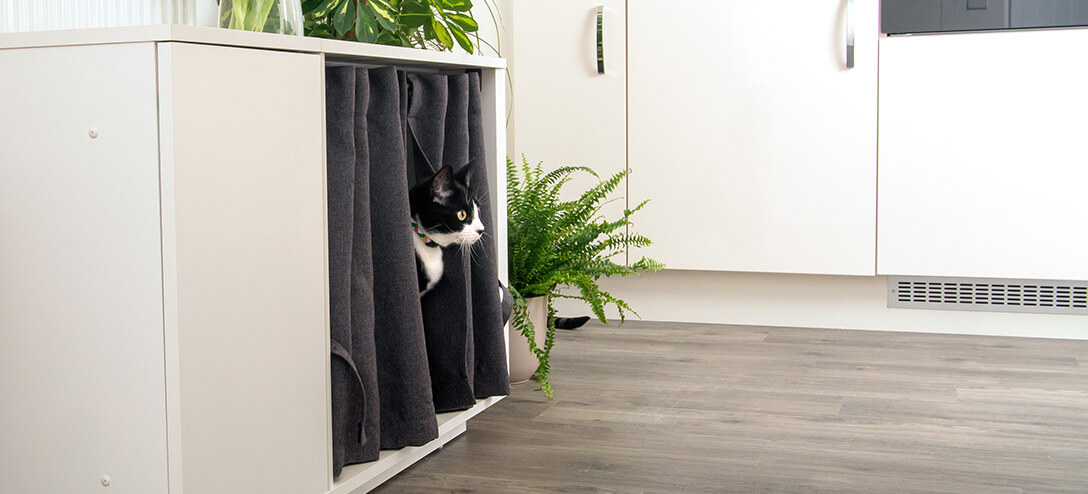
Cats are famous for several things. Independence, hunting and purring, for example. But intelligence? That’s a word more commonly handed out to dogs and parrots.
But that doesn’t mean cats aren’t smart. It’s simply that they don’t show off or shout about it. Under that cool exterior, there may be a lot of brain power.
So, do you have a feline Einstein, or more of a Tired Tom?
To find out how your pet’s grey matter measures up, we’ve put together this fun Cat IQ test. Put puss through her paces and see how she compares to the other brain-fit felines out there! Add up your results in the points column and share them with your friends!
The Omlet Cat IQ Test
1 . How old is your cat?
Less than 1 year
1-5 years
5-10 years
10-15 years
Older than 15
0
1
2
1
0
The years of peak feline fitness are matched by peak brain power.
2 . Does your cat respond to its name?
Yes
No
Sometimes
Yes – along with any other word I say!
3
1
2
1
No zero points here, as a cat that knows its own name may sometimes simply choose to ignore it!
3 . Does your cat sit in the middle of the street?
Often
Sometimes
Never
0
1
2
Basic knowledge of what constitutes a dangerous place is key to cat intelligence.
4 . Does your cat run out in front of cars?
Often
Occasionally
Never
We live away from busy roads, so it’s hard to tell
0
1
2
1
Awareness of danger sorts the smart cat from the not-so-smart.
5 . Does your cat stalk and kill small animals?
Often
Occasionally
Never
Hunts, but doesn’t usually catch anything
3
2
0
1
For a cat, a hunting brain equals a clever brain.
6 . What is your cat like around people?
Loves everyone
Likes family and friends, dislikes strangers
Seems scared of everyone
Has certain people she seems to hate
Doesn’t seem interested in anybody
1
3
1
2
0
A cat that can differentiate between people is a smart puss.
7 . How does your cat react when you come home?
Pleased to see you, rubbing and meowing
Comes to check who it is, but leaves it at that
No reaction (but make sure the cat’s actually in the house before reaching this conclusion!)
3
2
1
Bright cats will be pleased to see you.
8 . How does your pet respond to other cats in the neighbourhood?
In a friendly way
Cautiously
Aggressively
Submissively
Ignores them
1
3
2
1
0
Clever cats need to work out their place in the feline hierarchy.
9 . How does your cat respond to strange dogs?
Runs away
Stands its ground and hisses
Attacks
Ignores them
3
2
1
0
A smart puss knows an enemy when it sees one, and also knows when a fight isn’t worth it!
10 . Present your cat with food she’s not tried before. How does she react?
Refuses to eat it
Sniffs cautiously, possibly with an experimental bite
Eats happily
2
3
1
Not everything is edible, and a sensible cat will show a certain amount of caution.
11 . At feeding time, put an unopened tin of food next to the food bowl. What does the cat do?
Sits and looks at the tin, and then at you
Sniffs and/or rubs against the tin and meows
Examines the tin cautiously and then walks away
Shows no interest in the tin
3
2
1
0
Interaction with the tin suggests that the cat knows it contains food.
12 . Hold one of the cat’s favourite toys in front of her for a few seconds, and then hide it. Make sure your pet is watching as you do this. What does she then do?
Look for the toy, and find it
Look for the toy, but fail to find it
Remain sitting impassively
Walk away
3
2
0
1
Cats don’t always want to ‘play ball’, so it might be worth trying this one a few times before deciding on the result.
13 . Place a windup toy on the floor and let it ‘run’ under a chair, sofa, or other piece of furniture. What does your cat do?
Anticipates were it will emerge, either by moving there or simply watching the space
Looks at you expectantly
Gazes at the place where the toy first set off on its journey
Walks away
Looks away and takes no interest
4
3
2
1
1
A bright puss can deduce where the toy will emerge. But she might just not be in the mood!
14 . Put your shoes and coat on, as if you were about to leave. What is the cat’s reaction?
Meows or rubs against you
Goes to a window ledge to watch you leave
Seems uninterested, or walks away
2
3
1
Observant cats will recognise the clues that mean you’re about to leave the building.
15 . Has your cat learned to – or tried to – open doors, cupboards, windows, etc?
Yes
No
2
0
Clever cats watch and work it out, soon learning that things can be opened.
Scores
The smartest cats are thought to have an IQ equivalent to a 2- or 3-year-old human. How did yours do?
5-10 – Not-So-Cool Cat – Your pet barely has a claw on the IQ scale – less catnip and more training required!
11-19 – Tired Tom – Maybe your cat was feeling a bit lazy today… and every other day, come to that!
20-28 – Purrfect Puss – nothing wrong with this score, although if your cat keeps on looking and listening it might learn even more.
29-37 – Moggy Mastermind – your pet is well above the average when it comes to knowing how the world ticks.
38-42 – Feline Einstein – only a tiny percentage of cats are this clever!
This entry was posted in Cats
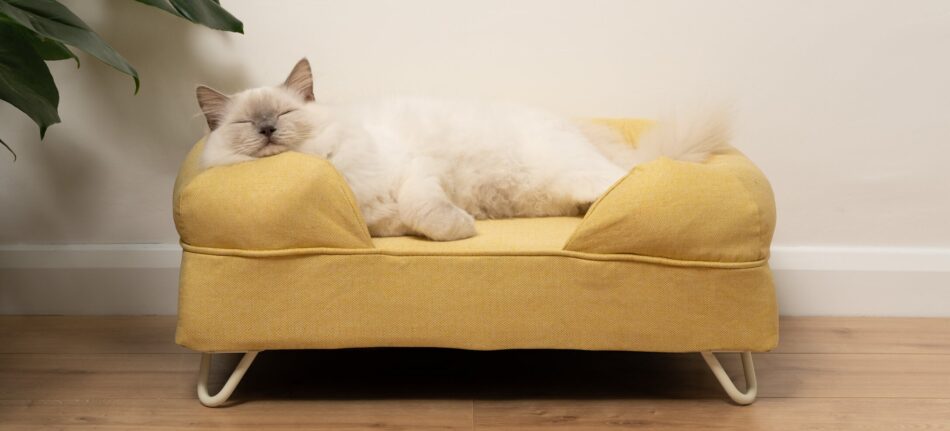
So you’re thinking about adding a cat or kitten to your family? Congratulations! But before you leap into feline parenthood, there are several crucial factors to consider to ensure you and your future furball enjoy a harmonious life together. The most important factor being where are you going to get your new furry friend. Rescuing a cat isn’t just an act of kindness, it’s a commitment that can span a decade or more. Luckily for you, we’ve compiled everything you need to know and consider before rescuing a cat.
Should I buy or rescue a cat?
Before going ahead with buying a kitten from a breeder, it’s important to remember there are lots of cats in rescue centers across the country, waiting for their forever homes. At Omlet, we strongly encourage visiting your local cat rescue before making a decision as there are a number of cats of all ages and breeds in centers. Here are some things to consider when deciding whether you should buy or rescue a cat:
Buying a cat:
- Breed preference: When you get your new furry friend from a breeder, you do have the ability to choose what specific cat breed you want. If, for example, you’re an allergy sufferer and need a hairless or hypoallergenic cat, then choosing this route might be best.
- Kittens available: While many rescue centers have kittens for adoption, the timing on when you want one and when they are available may not always match up. So if a kitten is a must for you, buying from a breeder may be best.
- Predictable temperament: No one can ever know for certain the true temperament of any animal, but when you buy a kitten or cat from a breeder you do get more information on their behavior type as they know the parents and how they act.
Rescuing a cat:
- Saving a life: Adopting a cat or kitten from a shelter or rescue organization gives a homeless cat a chance at a loving home, potentially saving their life. But ask any parent of a rescue cat and they will say it was their furry friend that gave them the new appreciation for life.
- Diverse options: When you visit a rescue or shelter, one of the first things you’ll notice is the wide range of cat breeds, ages, and personalities that are available to be a part of your family. This variety allows cat lovers to truly discover which cat best suits their preferences.
- Lower cost: In general, adoption fees to get a rescue cat are lower than if you were to buy from a breeder. And, most rescue organizations provide essential vaccinations and spaying/neutering services, which saves even more in additional costs to consider.
Is my home, garden, and neighborhood safe for a cat?
Think about where your home is located. Do you live by a busy street? This is important to consider as some rescue cat centers will actually not allow adoption if you live near a busy road – and for good reason. Some cats are skittish and can often put themselves in danger or at risk of injury when near a busy street. So to help avoid any unwanted tragedies, shelters and rescues avoid adopting out to these locations altogether.
Next, you need to consider whether your current home is really suitable and safe for a cat to be going outdoors. Is your backyard space big enough, fenced in, and far enough away from neighboring pets? If you didn’t answer ‘yes’ to all of these – fear not. You can still provide an alternative, secure outdoor space for your cat to play and exercise, such as an Outdoor Cat Run.
And if you live in an apartment and want to rescue a cat to be both an indoor and outdoor cat, you, too, can make it happen. With the Omlet Cat Balcony Enclosure you will give your cat the freedom to get some fresh air and playtime outside without fear of escape or injury.
Finally, it’s time to assess the surroundings within your home. Do you have other animals who could respond negatively to a new furry resident? When considering adopting a cat from a rescue or shelter, it’s important to first conduct a “meet and greet” with the other pets and children in your household. This allows everyone to get a firsthand experience of each other and see if there are any personality differences before welcoming a new member into the family.
Can I offer a secure space for the cat to feel comfortable?
For rescue cats, having their own space to hide when they get scared or anxious is incredibly important. Does your home have plenty of hiding spaces for your new cat to disappear to when it all gets too much?
The Maya Nook Indoor Cat House is the ideal den for nervous cats to be tucked away in or just to find their personal peace and quiet. The exclusively designed curtains provide a completely secluded space which allows your cat the ability to feel safe while still being able to check on their surroundings.
Can I provide a rescue cat with the support they need?
One of the best parts of rescuing a cat is seeing the transformation in their personality as they realize they are now part of a loving home. But in order for your new, rescued friend to feel at ease, they’ll need to receive lots of patience and support from you. Becoming settled into a new environment and new life takes time and will require you to be flexible and understand that it doesn’t happen overnight.
Consider first your job – do you want to rescue a cat but work full-time? If so, try and plan some days off before you bring your rescue home to allow much needed time to help your new furry friend get settled in. Spend this time helping them get used to their new surroundings and know where their litter box and cat food bowls are. And if your household has children, you’ll need to prepare them as well to be gentle and quiet with the new cat.
Most rescue cats are discharged from rescue homes with a full bill of health, but on the odd occasion they’re not, some cats may need a few more vet visits, or even repeat medication. If you rescue such a cat, be prepared to accept the cost and commitment required to provide the healthcare they need.
What will I need to settle a rescue cat into my home as smoothly as possible?
While love and patience are the two most important ingredients in making your new rescue adjust to life in your home, there are some essential cat products that will help make this transition easier on everyone.
- Bathroom time: Litter tray, cat litter, scoop
- Sleep time: Cat bed(s)
- Eating time: Cat food bowls – speak to the rescue center about what food the cat has responded to best, e.g. wet or dry
- Reward time: Cat treats
- Playtime: Cat toys
- Travel time: Cat carrier
- Zen time: Calming products – e.g. Feliway
- Safe outdoor time: Outdoor cat enclosure
Omlet and your rescue cat
At Omlet, we are a pioneering company in cat care. We craft our products to simplify cat rescue efforts and make pet parenting easier. By understanding feline behavior and the challenges and rewards associated with rescuing a cat, we are able to design innovative solutions that make the process effortless. From our supportive and comfy cat beds to our furniture-style cat houses to our safe and secure outdoor Catio enclosure, we think about your cat first so all you need to do is be the best rescue cat parent you can be.
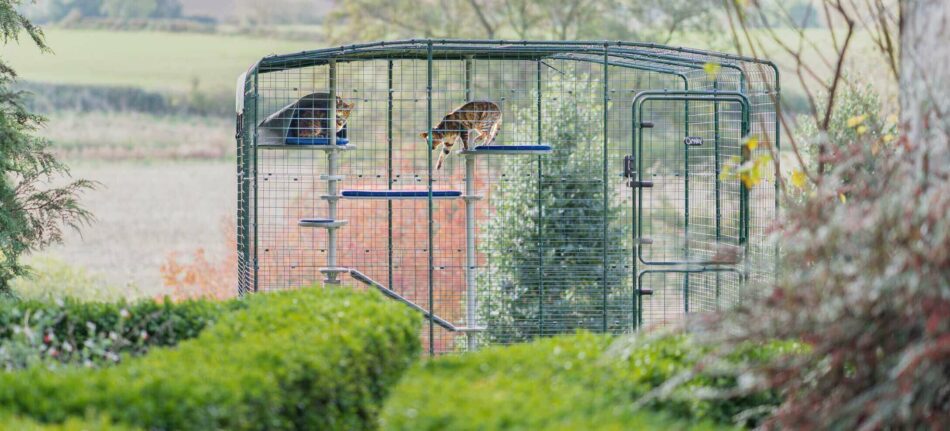
This entry was posted in Cats
Many cats in rescue centres looking for a new home have had a very tough time of it. Whether mistreated, abandoned, stray, or injured, the kitties who find themselves in the care of a rescue organisation can, quite understandably be wary of humans. But this isn’t a reason to give up on them.
When I adopted my cat he was depressed and overweight due to the large amount of time he had spent hidden away in his kennel, showing no interest in playtime or human interaction. He had been with the rescue organisation for 4 months and not one person had shown him any interest. Stress had caused his fur to come out in great tufts, but as I stroked him he let out a little purr. I adopted him then and there.
On bringing Smudge home, I opened the door to his cat carrier but he refused to step out for a good few hours, and when he did he scarpered under the kitchen table, hidden as best he could.
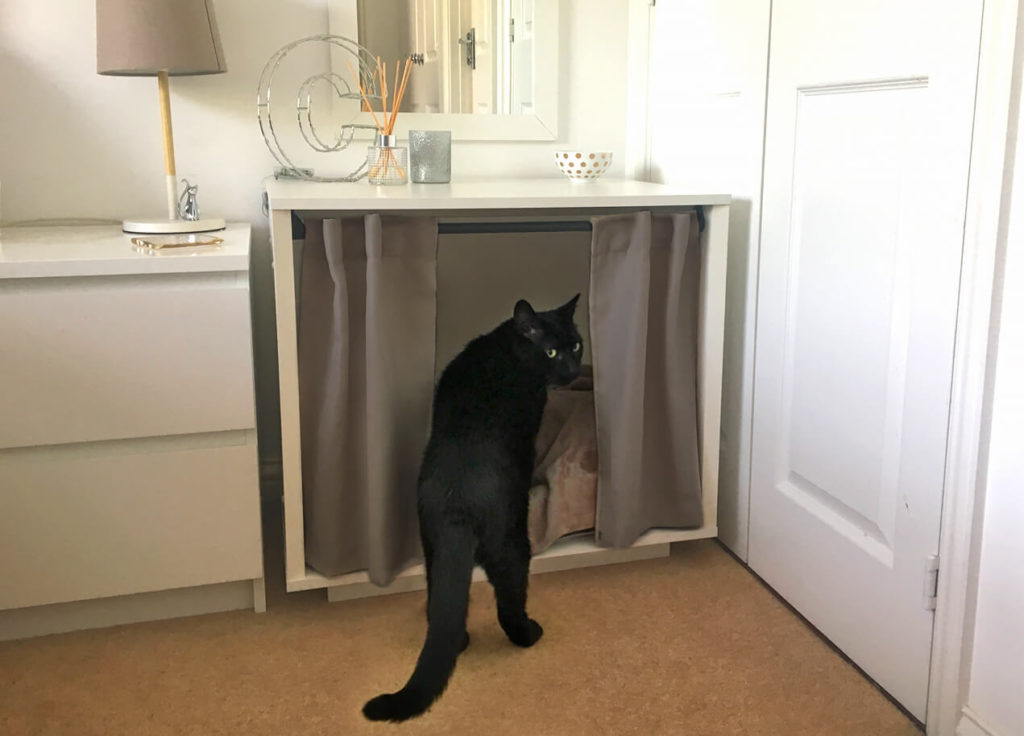
In his first few weeks with us he spent a lot of time hidden under beds, behind the sofa, in between boxes or attempting to blend in to a pile of clothes or under a blanket. It took a long time for Smudge to be brave enough to spend time on the sofa and beds, and even then he wouldn’t be up there for long until a slight movement or noise would frighten him and he would vanish.
It became very obvious he was going to take a bit more time to settle in and to feel less afraid, so I was going to need to think outside of the box – or more so inside. As I noticed he felt most secure in an enclosed space where nothing could reach him and he was protected from harm, I started to think about the best kind of bed to suit his timid personality.
The Maya Nook is a cosy indoor Cat House with curtains. Yes, you heard that right, it’s got curtains. But before you start rolling your eyes at another example of anthropomorphism, let me explain. The curtains not only make the Nook look really nice, they are also fully functional and transform the Nook into an enclosed little ‘room’ where cats can rest and sleep in a peaceful, secure space they can call their own. Placing their bed in a den-like Nook gives them a sense of distance and security from a busy home life, while the addition of the curtains completely closes off their space so they cannot see outside, and likewise they cannot be seen.
When I introduced Smudge to the Maya Nook, it took a short while for him to get used to it. I allowed him to spend some time alone with it, giving him the opportunity to approach it at his own will, instead of picking him up and forcing him inside, which I thought could create a negative association. He spent some time sniffing around, going in and out for short periods of time with the curtains open. When he had settled inside for the first time, I closed the curtains for 30 seconds or so and opened them again. I repeated this a couple of times so he could get used to both scenarios.
When he would spend time hidden behind the sofa or under a bed, he seemed to mostly be awake and on guard, unable to relax, whereas now that he is sleeping in his Maya Nook, I feel as though he is getting much better quality rest and actually being able to switch off from what is happening on the other side of the curtains.
The combination of a quiet space and better sleep time has had a multitude of benefits to Smudge’s progress in our home. He is visibly more relaxed and spends more time out of his bed and in the open space with the family, compared to when he spent all of his time hidden and stressed. He is beginning to open up to the possibilities of play time, visitors are still feared but he is becoming braver with showing his face, and always has the comfort of being able to run to his Nook whenever it gets a bit too much for him.
I am sure this will also be hugely beneficial for events such as Fireworks Night and New Years Eve, when the bangs and pops of fireworks can be relentlessly frightening and heard for weeks on end. The Nook will help to reduce the sound, while the curtains will block out any flashing lights coming through the window.
The Maya Nook is designed to fit in the home like a piece of furniture, so we are able to use the space on top for whatever we please. It is a great spot to feed my cat and keep his water bowl so it is always close by and in his “safe zone.” The Maya Nook is also available with a handy fitted closet which provides extra storage for cat food, treats and toys.
Adopting a rescue cat is really rewarding and I’m so glad that I didn’t let Smudge’s initial shyness put me off. If you have adopted or are thinking of adopting a rescue cat who continues to be very nervous and stressed in your home, I would highly recommend providing them with an indoor cat house like the Maya Nook so they can claim a secure space for themselves – it could transform your cat’s personality.

This entry was posted in Cats
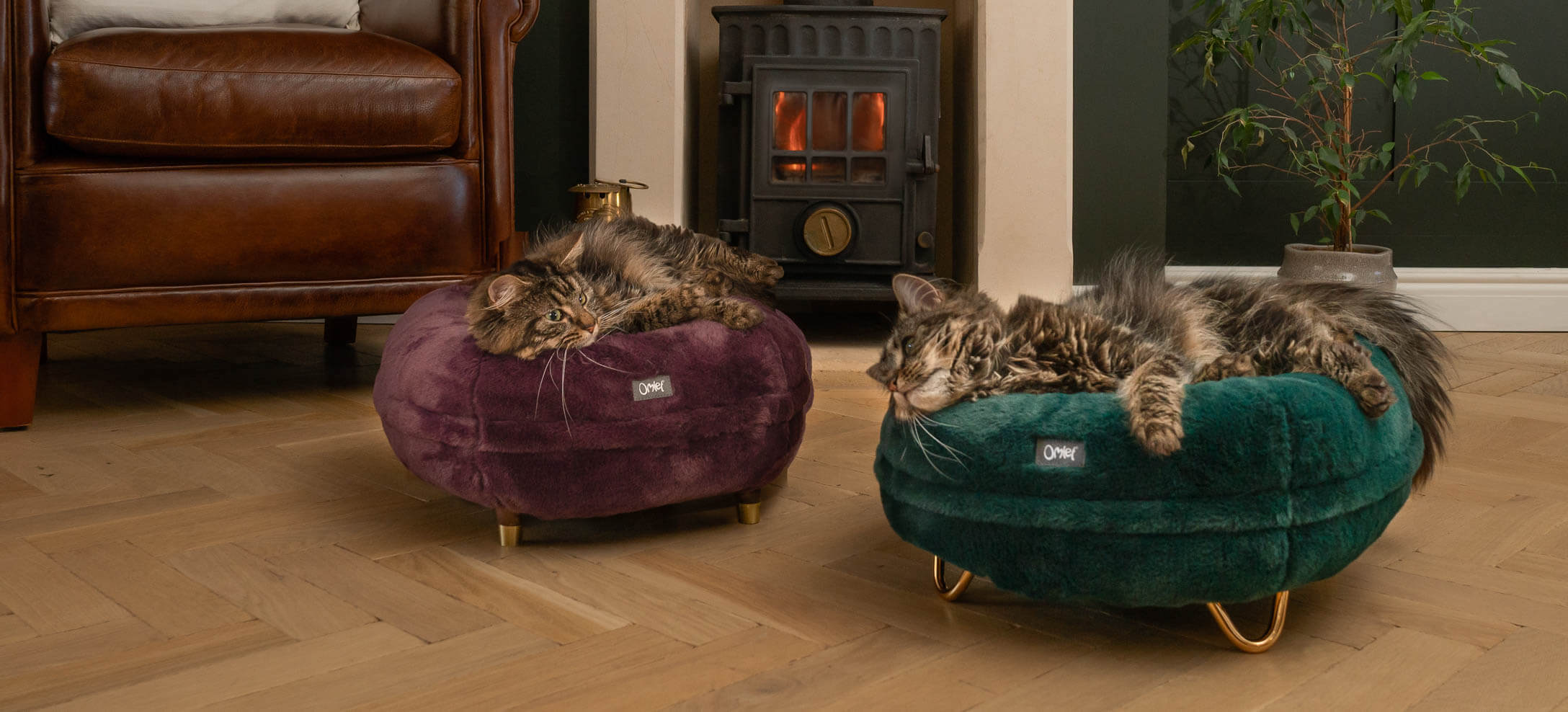
From purring to pouncing and all things in between, our cats’ nighttime antics can be enough to wake up even the heaviest of sleepers. But, to find out just how much our cats affect our sleep and the many ways they do so, we decided to conduct a survey and shed light on feline sleeping patterns.
The feline snoozing survey
The results are in, but what did our survey tell us? More than 80% of cat owners are having their sleep disturbed by their feline friends, reveals the latest Omlet survey. Following a discussion amongst the Omlet cat owners about the close sleeping arrangements with our pets, and the resulting impact on our daytime energy levels, we began wondering whether it is actually normal, or wise, to be allowing our cats to sleep in our beds. Are we just soft when it comes to letting our cats get cozy at night, or are we a nation of pet slaves who value our cats’ happiness more than our own sleep?
Over 900 cat owners responded and more than half (56%) said they let their cat sleep on the bed with them at night, with 40% allowing them to do so on the first day! In fact, by the end of the first month of cat ownership, the number has increased to 71% of owners allowing their cats into their beds at night.
A massive 84% of cat owners who allow their cat to sleep in their bedroom admitted to having their sleep disturbed by their cat – and as a result 1 in 5 cat owners sometimes resent their cat following a bad night’s sleep. Could this cozy sleeping arrangement actually be negatively impacting the nations’ relationship with their cats?
Cat nap or chaotic slumber?
We then invited these cat owners to share how exactly their cat disturbs their sleep. Many agreed that the main disturbance is due to their cats lying too close to them, purring, snoring or cleaning themselves. Here are our top 10 favourite, more unusual, ways that cats are disturbing their owners’ sleep…
- Chasing mice around the bedroom
- Patting my face
- Trying to eat my toes
- Zoomies at 3 am
- Dribbling on me
- Hairballs
- Trying to wake me up for breakfast, or asking for a snack
- Knocking things off shelves
- Licking my eyelid
- Restless dreams
A third of cat owners say they have to change their bed sheets more regularly since allowing their furry friend to sleep on their bed. Only a small number of participants (12.2%) are aware that allowing cats to sleep in their beds can be unhygienic.
Cornell University’s College of Veterinary Medicine found that when you look a bit closer cats can have parasites like fleas and ringworms, which unless treated can cause health issues in humans*. Fleas for example can jump into your mouth leading to owners becoming inadvertently infected by tapeworms. Yuck!
37% of cat owners have made the wise choice to shut their bedroom door at night, saying they can’t allow their cat to sleep on the bed because their sleep gets disturbed.
1 in 4 owners wish their cat would sleep in their own bed at night – which begs the question, why don’t they?
Perhaps they’re so connected to their owner that they can’t bear to be more than 2 inches away from them, or maybe their owner has never found a cat bed which provides the same level of luxurious comfort as a king-size bed and a thick, cozy duvet does? Until now…
Your cat’s sleeping solution
Bedsharing with your feline friend may leave you feeling better connected, but as evidence shows, doing so isn’t great for either party. That’s why at Omlet, we designed a bed that your kitty won’t be able to resist.
The Omlet Maya Donut cat bed offers a divine, sinking feeling for felines, complete with a faux fur cover to make for easy cleaning – happy cat, happy owner. The supportive shape also means cats can feel super secure, cocooned in a cozy nest area that feels like a big hug.
Place your Maya Donut cat bed inside the Omlet Maya Indoor cat house for the ultimate feline hideaway. Complete with optional storage space, your cat’s sleeping space can be transformed into a secluded and calming zone for them to be in complete peace and most importantly, out of mischief.
Designed to look like a piece of modern furniture, the Maya Indoor cat house looks great in any room and can be placed in your bedroom if your cat likes to be close to you, or downstairs to give you a truly undisturbed sleep while your cat enjoys a luxurious slumber in their very own cat house.
Overall 52% of cat owners said they may prefer it if their cat slept in their own bed, yet 70% of people say they don’t regret allowing their cat to sleep on their bed. So the Maya Indoor cat house might be the perfect compromise to keep both cats and their owners happy.
Omlet and your cat
Whether your cat chooses to sleep in your room, or somewhere else in the home, we designed products they won’t be able to resist. From the Maya Donut cat bed to the Maya Indoor cat house, your feline will choose to get their sleep in their own space every time, whilst building a wondrous connection with their owners as daytime arrives.
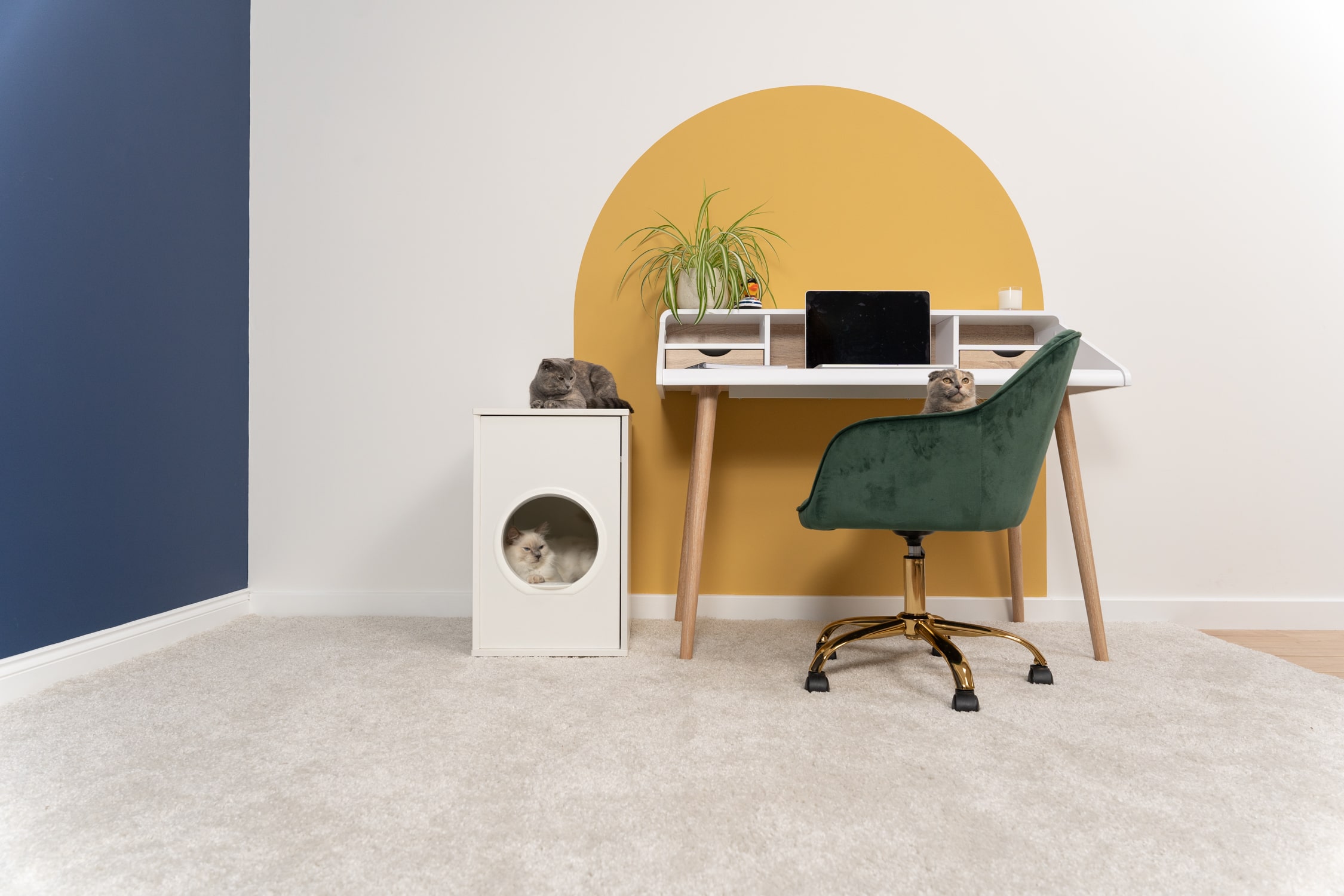
*https://www.vet.cornell.edu/departments-centers-and-institutes/cornell-feline-health-center/health-information/feline-health-topics/fleas
This entry was posted in Cats
Any cat owner…sorry, we mean servant… will know these struggles all too well. If you think of a crazy cat lady while reading these, make sure you name and shame them on social media using #OmletPets.
After swearing you would never let your cat on the bed, your cat now spends more time in your bed than you do, including under the covers.
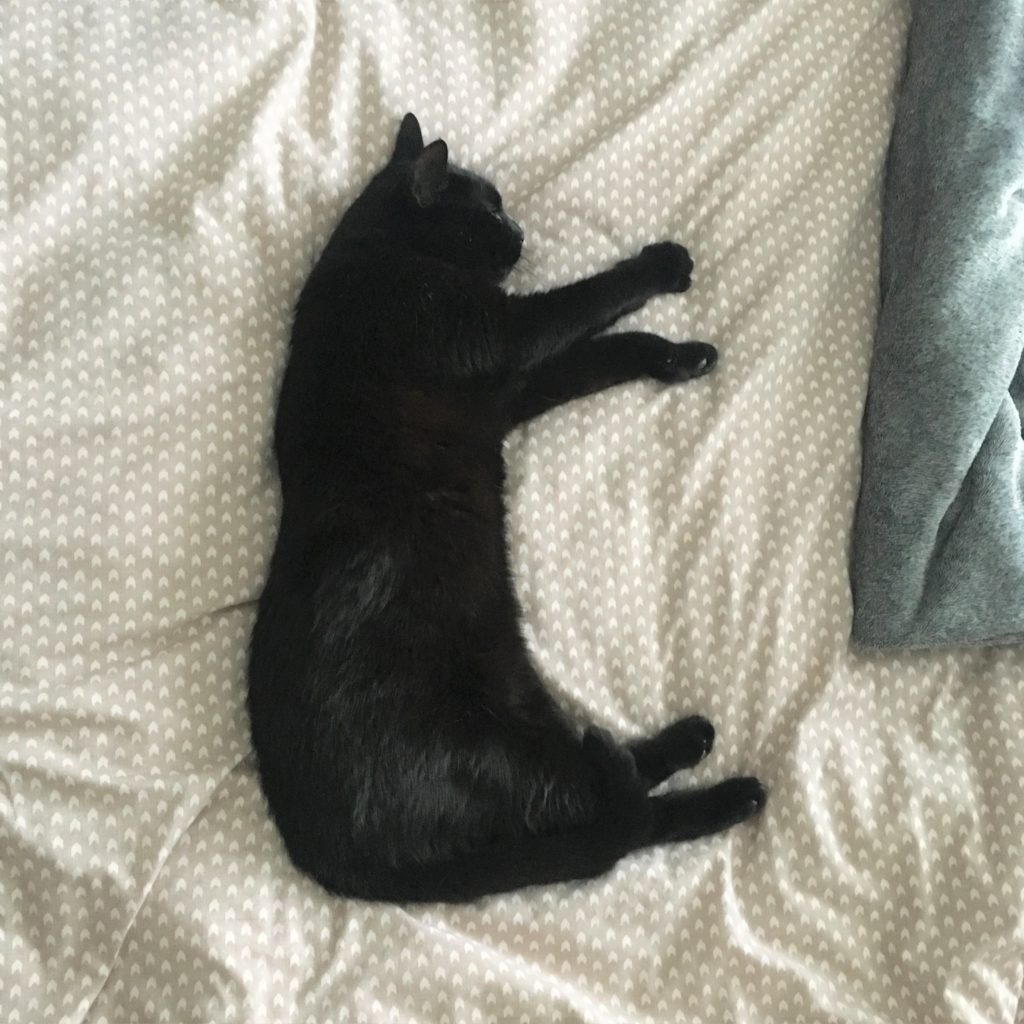
You also frequently wake up with your cat lying on you, your pillow, right by your face, across your feet etc.
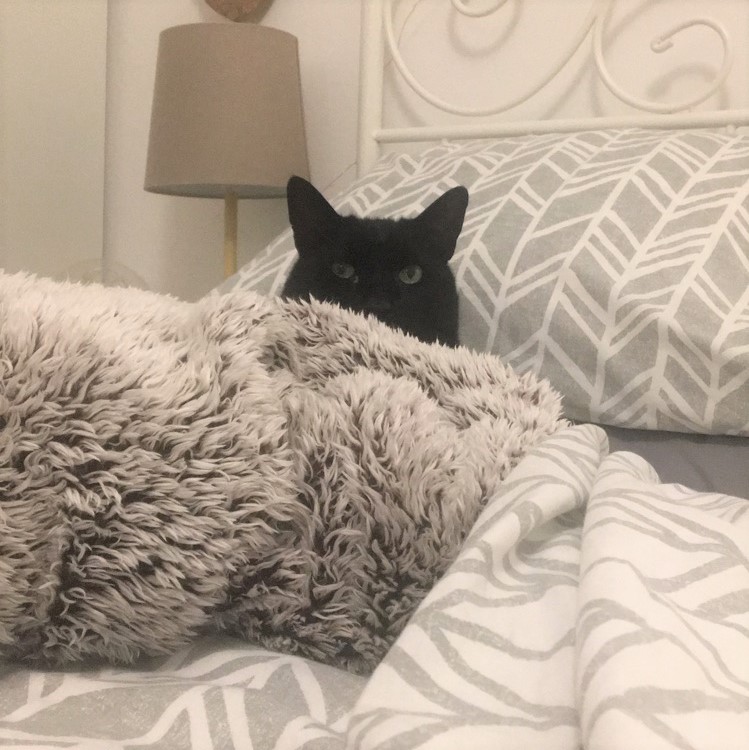
Your cat demands to have breakfast and dinner brought to them. And you give in. Every. Single. Time.
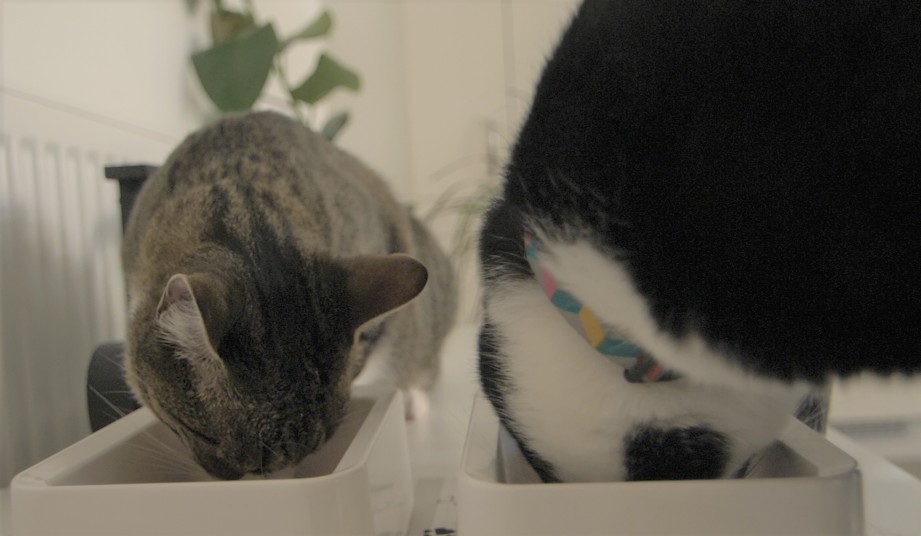
Sternly telling your cat “no” results in your pointed finger being swiped by sharp claws, even if they were in the wrong. Cats are never in the wrong.
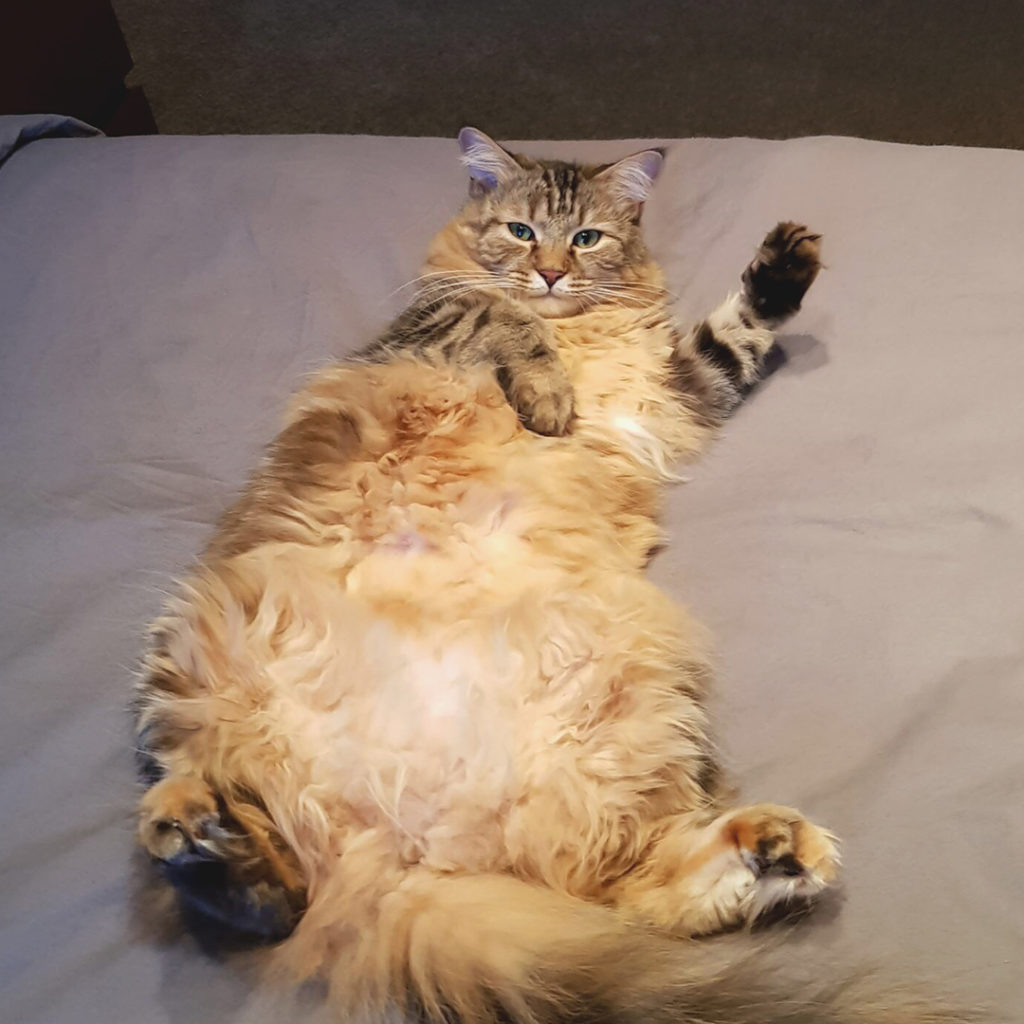
You have bought multiple toys which your cat has never touched…
“But the toilet roll is so much fun! Ooo – look a hair band! Packaging? MY FAVOURITE!”
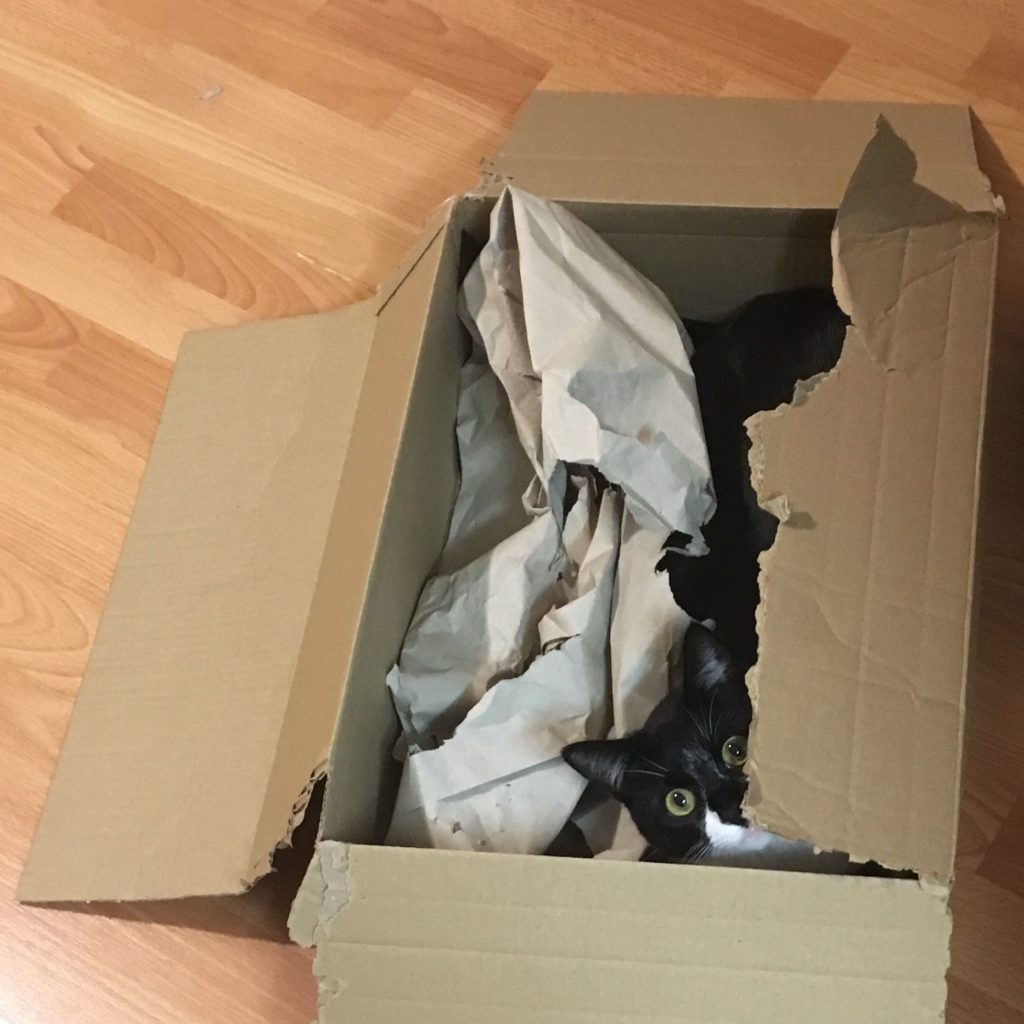
Who needs an alarm clock? You have a hangry cat!
“What do you mean 5am isn’t breakfast time? Get up!”
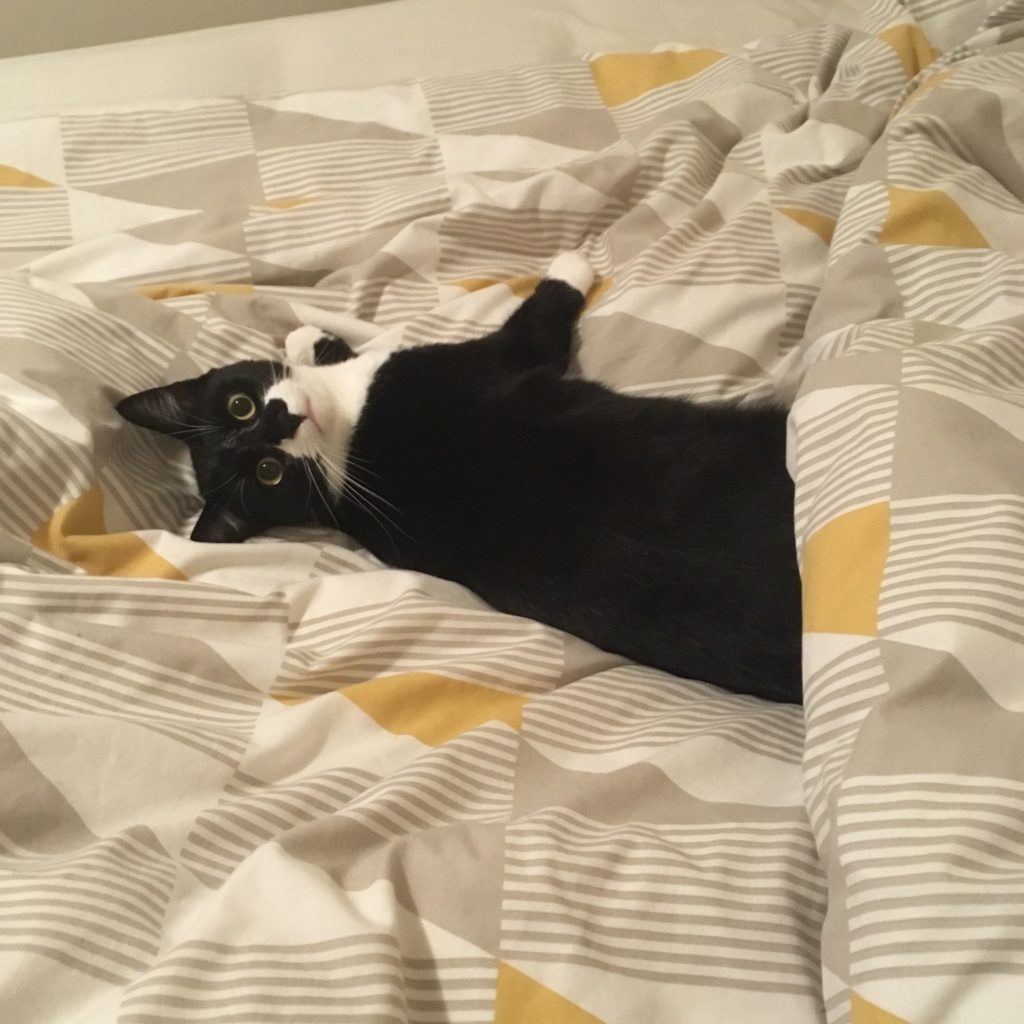
“If I want to play in the sink – I will play in the sink – don’t even THINK about moving me.”
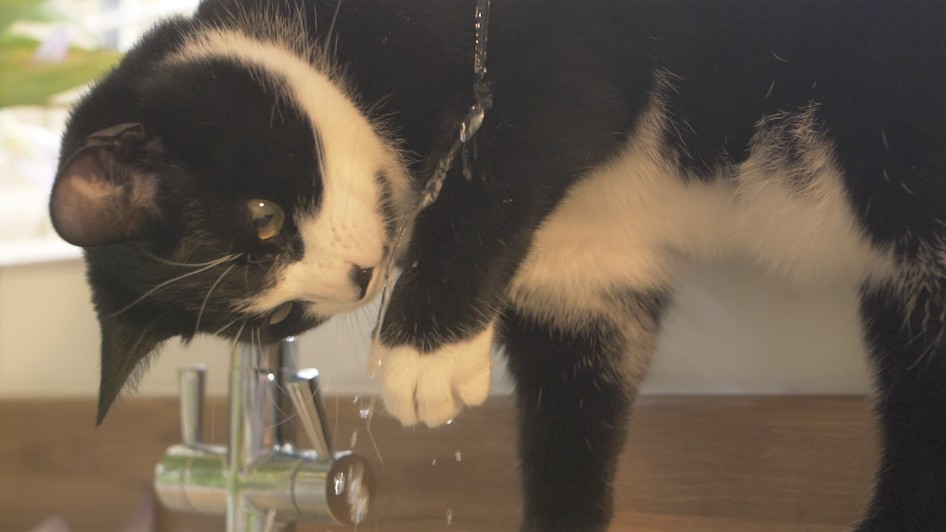
You still can’t help but love your cat no matter what they do! They do own you after all!
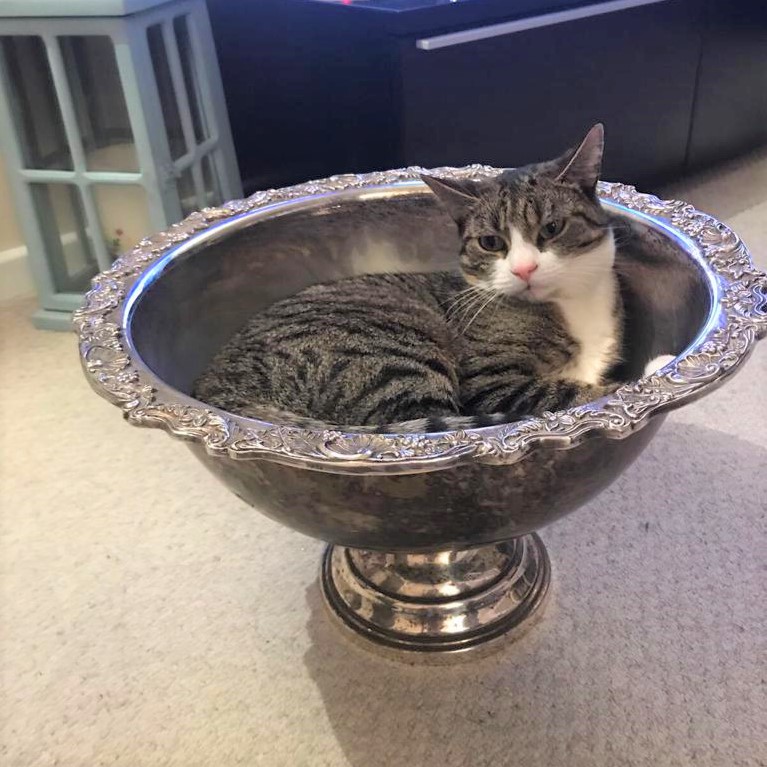
This entry was posted in Cats
Introducing a new cat or kitten to your resident cat can be quite a daunting situation. One thing you don’t want to do is just put them together without any thought or preparation.
If you introduce the cats too soon or without easing them in they can become very hostile due to the fact that they might be feeling threatened or scared.
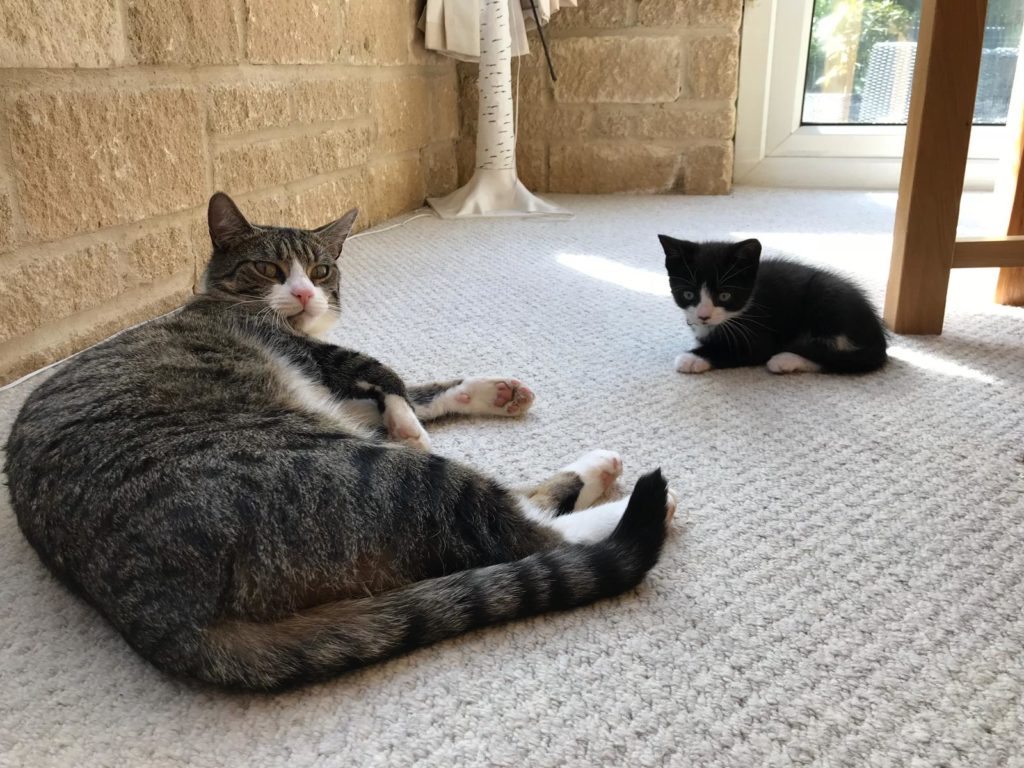
One thing to note particularly with cats is that once they feel this way about another cat it can be very hard to change their minds hence why a cautious and slow introduction is the best way to ensure both animals feel safe and happy together.
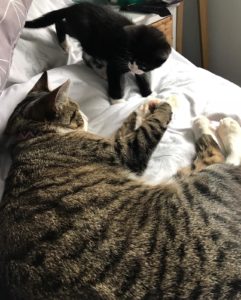
Unlike many animals and humans, cats don’t actually crave companionship from one of their own. They are perfectly happy being the only cat in the house. This isn’t to say they won’t enjoy the company of another cat it’s just they don’t have that need or desire for company that you are used to seeing in other animals.
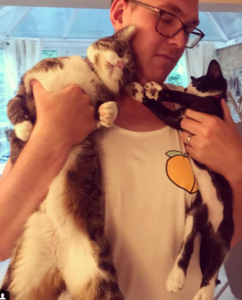 Introducing a new kitten to an existing adult cat might be easier as the older cat might not feel as threatened due to the fact that the kitten isn’t sexually mature. However it is worth noting that a kitten will be very lively and playful which for a resident older cat might be quite stressful so it’s important you give your existing cat some down time in a separate room to chill out.
Introducing a new kitten to an existing adult cat might be easier as the older cat might not feel as threatened due to the fact that the kitten isn’t sexually mature. However it is worth noting that a kitten will be very lively and playful which for a resident older cat might be quite stressful so it’s important you give your existing cat some down time in a separate room to chill out.
Initially it is best to keep the cats in separate rooms of your house. One in the living room and one in the spare room for example. Place all the items your new cat will need in this room, litter tray, food, water etc. Make sure there is no competition for food, litter trays and sleeping areas. Create safe separate spaces for both of them to co-exist.
Cat diffusers- These can be used a couple of days before you bring your new cat into the home, these are designed to emit pheromones which relax and soothe your cat which makes them feel safe and secure.
If you are introducing a kitten, you can use a dog crate for the initial stages. Top tip: get your kitten used to the crate before you place the kitten in the same room as the resident cat, you can do this by using it in a separate room with the door open for the kitten to become familiar with the crate.
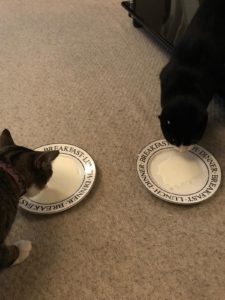
Height is another great asset for cats particularly when they’re feeling scared or threatened. Make sure there is enough high areas or places in your house for the cats to access to give themselves a bit of time to calm down.
Cats have a good sense of smell, therefore unfamiliar scents can be stressful for them, especially when they know it’s from another cat. The idea of scent swapping is an easy but super effective way to safely get the cats familiar with one another. Try swapping their bedding nightly also stroke both cats separately but don’t wash your hands in between, this will cause their scents to become mixed up and they’ll start feeling more familiar with one another even before they’ve met!
Common ground- for initial introductions you want to make sure that the cats are meeting in a neutral area that’s not assigned to either of them but ensure that they have access back to their own safe spaces if they want to leave. In this time, initially just leave them to it, they will assess each other from afar and when they feel comfortable enough to approach each other they will. Try to refrain from picking them up and forcing them to be closer together.
One great way to start the cats bonding is to feed them both at this time, in separate bowls but with a good enough distance between them.
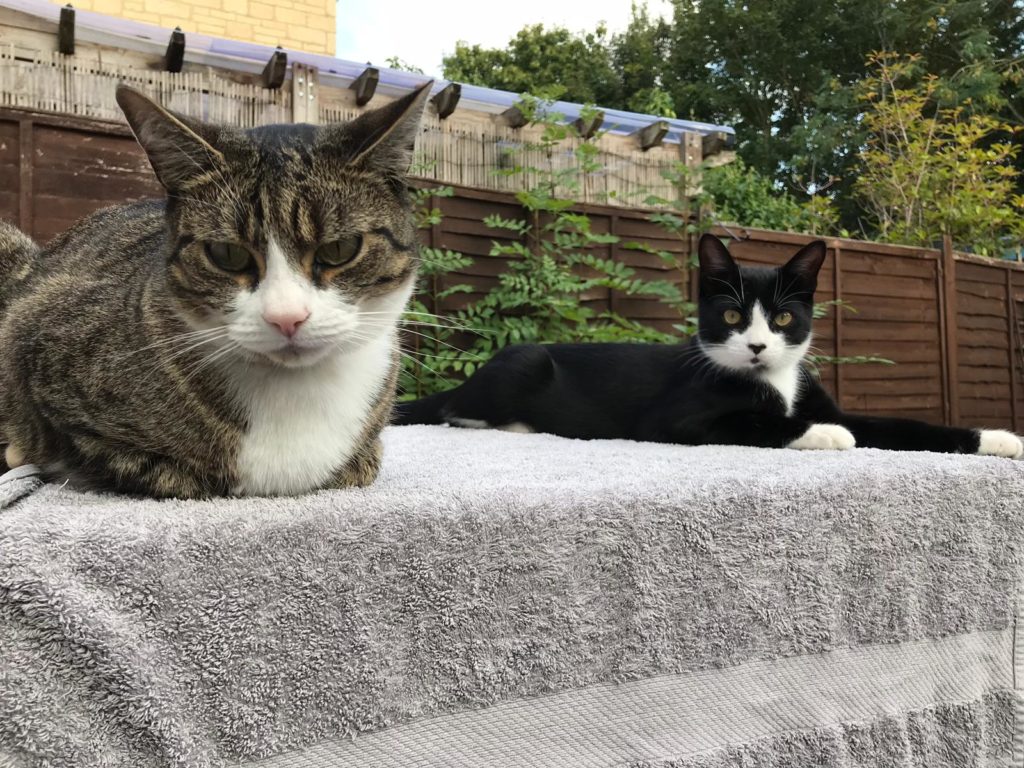 Hissing and moaning isn’t unusual but it just lets you know where they are at, perhaps slow the process down and keep them separate for a few more days and then try again.
Hissing and moaning isn’t unusual but it just lets you know where they are at, perhaps slow the process down and keep them separate for a few more days and then try again.
Most importantly to create a harmonious environment for your new and existing cat is to make sure there are enough separate areas for them to eat, drink, sleep and go to the toilet, this is a sure fire way to ensure there’s no unnecessary fights!
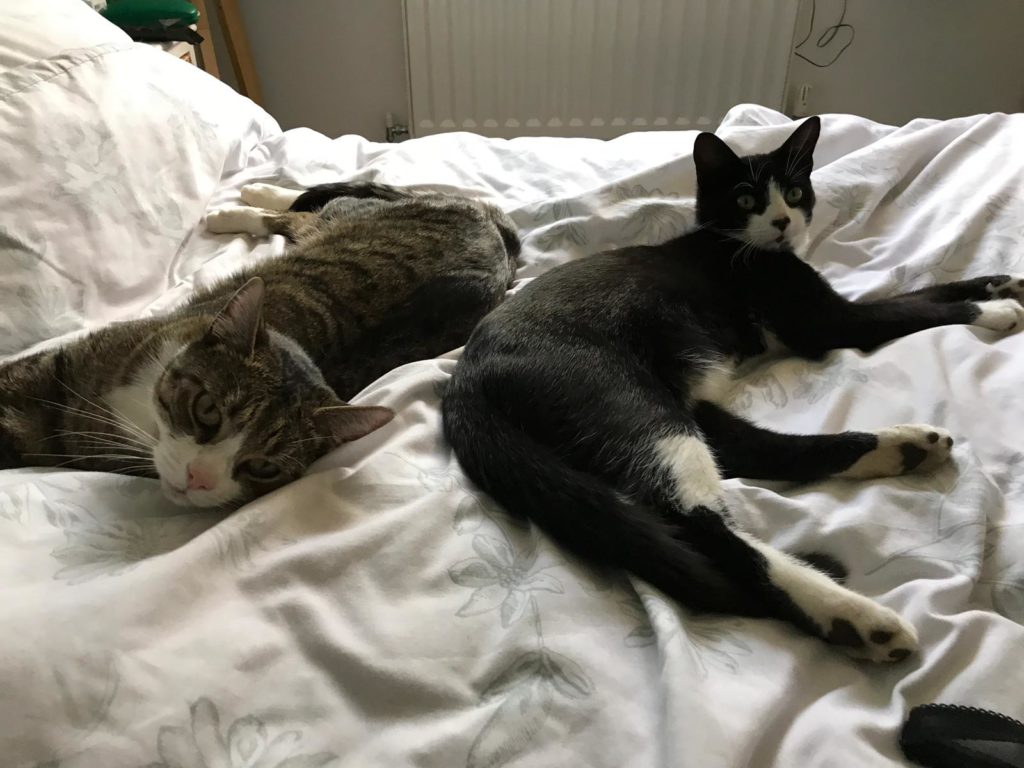
This entry was posted in Cats
Do or Don’t??
Are you considering buying a run for your cat?
5 degrees outside, oh how we’d love to open a window or the French Doors, but we have two indoor cats that might attempt to get out.
This is how we first got the idea for a cat run.
My husband is very determined that the house and garden should look good, so fencing in the whole garden was not an option for us. Anyway, fencing might keep our cats in, but it wouldn’t keep other cats out.
Next idea, should we build a run ourselves? No, it won’t look good next to the house and it’s not flexible.
I was looking around for something movable and flexible, but it just didn’t exist! Or did it? Suddenly I came across Omlets solution – exactly what I was looking for.
An outdoor run for which I would be able to decide the length and width myself. Easy to move, pack up, make smaller or make larger – and it’s green like the garden. One of the things I fell for is that you can place the run directly on the grass, so the cats have a natural floor to play on. The roof is made up of the same netting as the rest of the run, so the cats can keep an eye on what is happening in the sky, whether there’s a bird, a plane or something else.

When it rains the run can be covered so you can use it with your cats like a kind of covered terrace. The same covers can also be used to create shelter from the wind, shade from the sun or a guard to give the cats some peace and quiet.
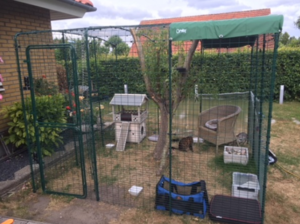
Some people might feel it’s not right to put cats in a cage, but I don’t see it as a cage at all. I call it the cats’ outdoor space. We keep them there to protect them but at the same time it gives them the opportunity to experience nature and get some fresh air without the risk of getting run over or get into other bad situations. Both our cats love their outdoor space and they use the entire run like one big climbing frame.
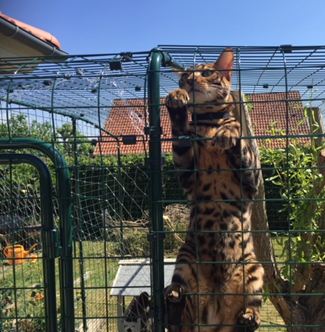
Now we can enjoy life outside with our cats
No more being woken up in the middle of the night or early in the morning – now we have two happy cats that get all the mental and physical stimulation they need in their outdoor space.
The Omlet Outdoor Cat Run has given us our outdoor life back and given our cats a better, healthier life.
– Maria, Roskilde
This entry was posted in Cats

























 Special Notes For Cats
Special Notes For Cats
















 Introducing a new kitten to an existing adult cat might be easier as the older cat might not feel as threatened due to the fact that the kitten isn’t sexually mature. However it is worth noting that a kitten will be very lively and playful which for a resident older cat might be quite stressful so it’s important you give your existing cat some down time in a separate room to chill out.
Introducing a new kitten to an existing adult cat might be easier as the older cat might not feel as threatened due to the fact that the kitten isn’t sexually mature. However it is worth noting that a kitten will be very lively and playful which for a resident older cat might be quite stressful so it’s important you give your existing cat some down time in a separate room to chill out.
 Hissing and moaning isn’t unusual but it just lets you know where they are at, perhaps slow the process down and keep them separate for a few more days and then try again.
Hissing and moaning isn’t unusual but it just lets you know where they are at, perhaps slow the process down and keep them separate for a few more days and then try again.


